London Design Biennale 2023 is now open under “The Global Game: Remapping the Collaborations” theme and can be visited until 25th June at Somerset House. The theme chosen by this year’s Artistic Director, the Nieuwe Instituut, led by Aric Chen and invites participants to appoint new forms of collaboration to react to global changes.
“The Global Game: Remapping Collaborations” aims to create an alternative geopolitical landscape driven not by competition nor conflict, but rather cooperation…
Aric Chen
This year London Design Biennale hosts over 40 participants from different countries to enable new forms of international collaboration through design. The fourth edition of the event also hosts the EUREKA exhibition that presents design-led innovations from the UK’s research centers with interdisciplinary creations from academics, leaders, and problem solvers.
The Biennale contains various methods from traditional practices to urban development sustainability to humanitarian responses to crises. The event aims to put design as a collaborative practice in a time when the geopolitical environment changes. Here are the participants from this year’s London Design Biennale:
Formation Of Soof (United Arab Emirates)
Curatorial team: House of Artisans (Azza Alsharif, Zeina Barto, Reem Alhosani, Shamma Al Mansoori)
Exhibition design: Milktrain, Giampiero Sanguigni
Abu Dhabi’s House of Artisans is one of the participants at the London Design Biennale 2023. The Formation of Soof is an immersive installation that praises the essence materials and tools of Al-Sadu craft. Al-Sadu is a traditional weaving technique in the United Arab Emirates. The technique is executed using the wool of sheep, camels & goats, and the craft inscribed on the UNESCO List of Intangible Cultural Heritage in Need of Urgent Safeguarding in 2011.
Al-Sadu is also a key design point for former architectural productions such as Bedouin Tents. The curatorial team connected the Al-Sadu with the theme The Global Game: Remapping the Collaborations by highlighting the collaborations between crafts and architecture. The team also aims to raise awareness of the importance of preserving these crafts for future generations.
The immersive installation shows the details of the technique and the process from raw material to the Sadu textile, an essential element for traditional Bedouin Tents. With the unique connection of the theme, Formation of Soof was awarded the London Design Biennale Theme Medal, for the most inspiring interpretation of the theme.
AI Mind Home (Ai-Da)
Artist: Ai-Da Robot
Curator: Lucy Seal
Project Director: Aidan Meller
Ai-Da is the first humanoid robot artist and will make history with her daily item designs such as mugs, vases, plates, and cutlery using the artistic AI algorithms. AI Mind Home exhibition includes her household object designs produced with 3D printers.
Ai-Da is mentioned as an artist living at Porthmeor Studios in St Ives. The artist started her designs in 2021 and was inspired by works around her such as St Ives School, Bauhaus, Picasso’s Madoura works, Bloomsbury’s Omega Workshop, and the Leach Pottery. But she also includes deconstruction and failed utility in her unique style.
“It is imperative that we as a society consider the implications of increasingly powerful new technologies. I hope my designs stimulate this discussion” said Ai-Da.
This exhibition opens a discussion about how human and machine relations are evolving daily. With ai-designed objects, the range widens that we use in our houses. The physical production of Ai-Da’s designs also exists in the digital world in a virtual home of a possible future.
Brot: Baking the Future (Austria)
Designers: Anna Rosinke, Maciej Chmara
Curator: Thomas Geisler
Designed by Chmara.Rosinke and curated by Thomas Geisler, the Austria pavilion dives into the complex background of the bread. Bread may seem simple, but this exhibition aims to promote the idea that bread and the bread-making process can open up a whole new universe and pathway for design practices. Bread and bread-making have a background that includes both geopolitical contexts and microbiological processes that can trigger widening discussions.
Baking has multi-layered educational and sensational steps. From the fermentation to bread’s textures and smell, baking serves a sensory experience for people. The exhibition invites visitors to a workshop with discussions about microorganisms, the therapeutic process of baking, and the tasting at the end. Discussions about micro-organisms during the process include how our collaboration works, how we feed them, and how they help us to produce the staple food, bread.
Creative Differences (Automorph Network)
Members: Eran Sharon, Benoit Roman, Lining Yao, Antonio de Simone, Arielle Blonder, Ofri Dar, Dominique Peysson
Curator: Arielle Blonder
Creative Differences installation is a collaboration work with scientists and designers who are working on the concept of self-shaping matter. They observe the inhomogeneity of nature and find it harmonious and generous, unlike the common human approach where elimination of the difference is the method.
Automorph gets inspiration from the natural elements’ shapes where nature takes control and creates the most beneficial forms for critical points such as efficient use of material and energy. They aim to follow and implement nature’s self-morphing to human production. By questioning how much waste and energy could be saved if we allow matter itself to be a partner in the shaping process, Automorph aims to spread the idea and works with interdisciplinary collaborations.
The exhibition shows self-embedding seed pods that open in response to moisture, tiles that bend during the cooking process via strategically placed grooves, and sea creatures made of silicon that seem to change shape with the air.
Im-Printing: The Artist’s Brain
Designer: Beatie Wolfe
Im-Printing: The Artist’s Brain installation by Beatie Wolfe lets visitors inside her brain. The thinking cap created by fashion designer Michael Fish plays a role as a tool for listening and exploring the brain’s different channels. Via this design, visitors are invited to delve into many modes and sonic imprints such as conversations, collaborations, music, memory, hopes, fears, and dreams.
Retro stations are plugged into the hat, enabling people to explore various brain channels. The specific channels are music (occipital lobe), conversations (temporal lobe), collaborations (frontal lobe), memory (hippocampus), fears, and philosophy (cerebral cortex). The information associated with each channel was embedded in glass and weaved into the cap using an ecological technique designed to maintain data for up to 10,000 years.
Installing old-school phones on the wall creates a playful environment for visitors to experience collected data. The artist aims to show the audience potential of gaining deeper information about ourselves and each other.
Bidi Bidi Refugee Music & Arts Centre
Design Team: Nachson Mimran, Xavier De Kestelier
Architect: Hassell
Local Architect: LocalWorks
Engineering: Arup
Landscape Architecture: The Landscape Studio
Bidi Bidi in Uganda is Africa’s largest refugee settlement, and the world’s second-largest, with a population of about 270,000 people, most of whom fled their homes owing to South Sudan’s violent conflict, and 65% are under 18. The Bidi Bidi Music & Arts Center building project in Uganda aims to reconsider the definition of being a refugee. The project was designed in collaboration with the Bidi Bidi community, architectural firm Hassel, Kampala design studio LocalWorks, and engineers of Arup.
The building serves as an education hub and community center for the Bidi Bidi community. It is currently under construction and highlights the building strategies and materials in the London Design Biennale. The project’s main principles are using low-cost, low-carbon local building materials, with a labor force comprising refugees and host-community Ugandans. By excavating soil from the site, the main building material is compressed earth brick.
With the installation during the Biennale, visitors can see the materials that are used in the construction and a real-scale model of the roof that enables rainwater collection through a large path.
Care Pavilion
Curator: Naiyi Wang
Director: Song Tao
The Care Pavilion aims to create a productive ground for considering “care” from various perspectives. The project asks interdisciplinary designers, architects, thinkers, activists, scholars, healers, and cultural practitioners from the Global South and Global North to respond to the theme. Offers the Biennale as a testing ground to re-imagine the politics and ethics of care.
The team draws attention to the theme of Care and points out the sharp meaning of this word since 2020 with the global pandemic. They say that the concepts of care – caring for, caring about, and caring resonate in many spheres. By highlighting the importance of collective care and cure, the pavilion aims to make different forms of care visible and accessible to everyone.
The Future for Beginners
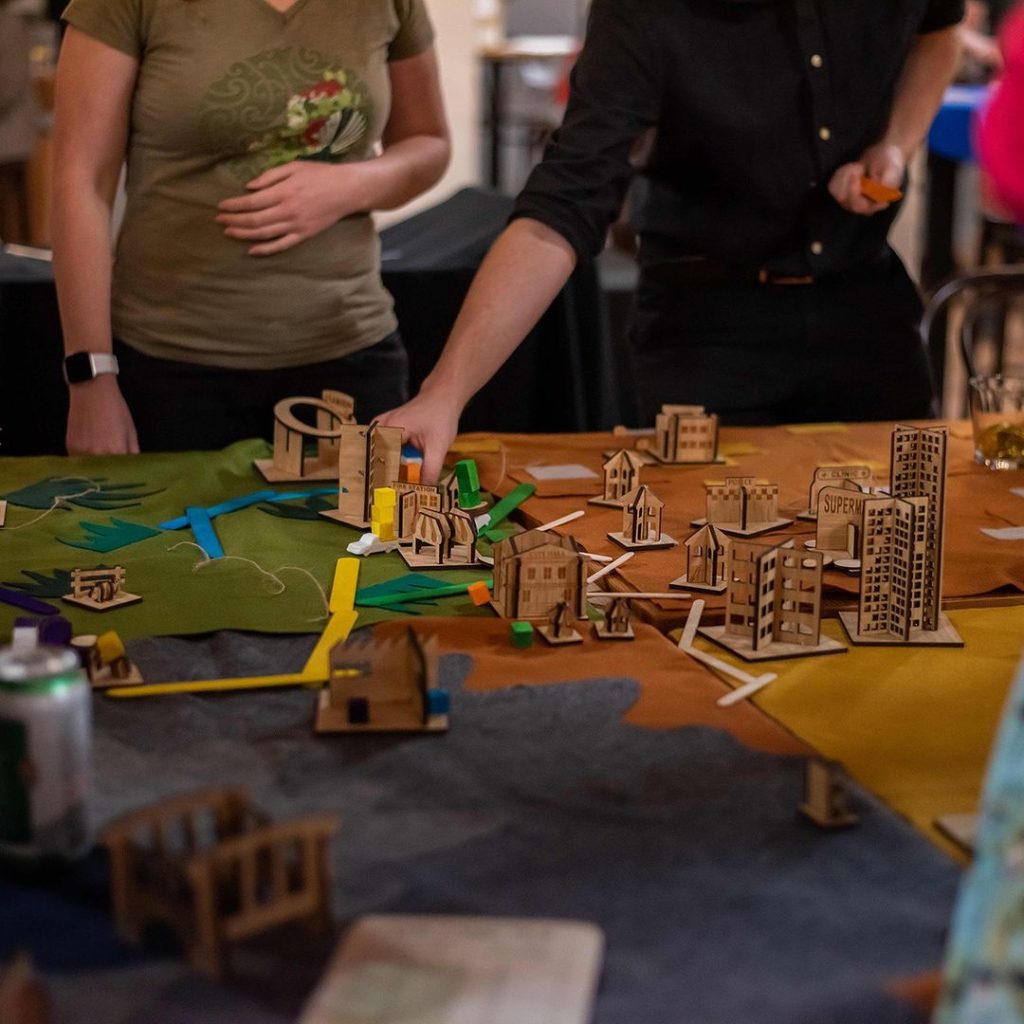
Designer: Becky-Dee Trevenen
Curators: Chatham House, London Design Biennale, Melanie Frances, Becky-Dee Trevenen, David Finnigan, Coney
The Future for Beginners is an interactive simulation game with 30 players. The game was created by David Finnigan, Melanie Frances, and Becky-Dee Trevenen in collaboration with Chatham House and London Design Biennale. It is about making strategic decisions on a small peninsula that is close to a typhoon disaster. The story behind the game is explained. Five towns in a small peninsula have an upcoming major cultural festival.
Dangerous news comes from the ocean as the day of the festival approaches. With the worsening weather conditions, the risk of typhoons increases in the region. In this case, the regional leaders have to decide. Will they continue their preparations for the festival despite the typhoon risk, or will they make emergency decisions in the face of this great disaster?
During the Biennale on various dates, participants can play the game. With collaborative working and thinking players will decide the fate of the towns. In the end, they can see the results of their decisions.
Chausse 36 (Germany)
Designers: Julianne Sibiski, Renaud Vercouter
Curator: Ségolène Mure
Chausse 36 is a restoration and renovation project of the 1885 historical building in a former Prussian army officers’ residence in former East Berlin. The unclaimed building transformed into a cultural hub that hosts an exhibition center, wellness cafe, library, publishing unit, gallery, and apartments. The project was completed in 2021 and opened to visitors from all over the world.
The site displays three original pieces from the Berlin Wall, invites dialogue and creative encounters, and aims to create an environment for new visitor collaborations.
Borrowd Matter / Materia Prestada (Chile)
Designer: Sofía Guridi
Curator: Juan Pablo Vergara
Designed by Sofía Guridi and curated by Juan Pablo Vergara, the Pavilion of Chile Materia Prestada is an interactive multi-sensory installation that contains woven bio-textiles. The project arose from deep academic research regarding bio-textile and cellulose’s origin. In Chile, the forest industry cover %4 of the national territory, and monocultural production increases various socio-environmental challenges.
Triggered by these challenges, the project focuses on the potential of cellulose. Using cellulose as a renewable, biocompatible, and biodegradable material, Materia Presteda showcases a connection with a local and cultural vision. Including the hand-weaving technique makes visitors follow the manufacturing process that includes human work and the final textile.
The installation contains seven suspended bio-textile works made with natural fibers and cellulose sheets. One of them is dipped in the water which makes it gradually degrade. This process lets visitors witness its potential for eco-circularity and reveals the hidden layers of information about the textile.
Virtual Congo (Democratic Republic of the Congo)
Designers and Curators: Didier Demif, Sam Williams, Marise Aoun
The Musée National de la République Démocratique du Congo (MNDRC) houses hundreds of items, artworks, and records linked to this complex central African country’s diverse cultures and communities. The museum is one of the landmarks in Kinshasa. The architecture of the building is a blend of traditional design and visionary engineering. It aims to showcase what is possible with collaboration, peace, investment, and hope.
The pavilion of the Democratic Republic of Congo represents the national museum as a vivid virtual reality. By bridging the physical and digital worlds, the installation invites visitors to experience central Africa’s diverse culture and the Congo’s spirit.
The Blue Nomad (Denmark & Switzerland)
Design and Development: Students Institut auf dem Rosenberg (Students K1-12), SAGA Space Architects
Developer: Pioneer Ventures
The Denmark & Switzerland pavilion draws attention to life on the water. Blue Nomad is a self-sustaining solar floating habitat demonstrating a fossil-free future for living and traveling on the water. The project got inspiration from the first Polynesian nomadic settlements. By addressing climate change, rising sea levels, and contemporary nomadism, it serves a compact, comfortable, permanent, and sustainable floating life. The idea of futuristic life of traveling and living in the ocean includes solar power harvest, food production, freshwater, and electricity.
Pioneer Ventures develop this contemporary nomadism representation. The pavilion is designed and engineered in collaboration between SAGA Space Architects and students of Students Institut auf dem Rosenberg.
LLAMADA – Calling & TE VEO ME VEO (Dominican Republic)
Architect and Artist: LiLeón
Curator and Art Critic: Roberta Semeraro
The Dominican Republic pavilion includes two projects by artist and architect Lileón. The project focuses on collaboration with our authentic selves.
LLAMADA – Calling is inspired by the greeting given to each person at birth. This work in progress aims to bring us closer to our life’s purpose by using the quiet and even movements of breathing in and out. TE VEO, ME VEO – I see you, I see me is an invitation to connect with people and our genuine selves. It was shown at the 58th Venice Art Biennale in 2019. The interactive installation allows visitors to play on a seesaw part of an egg-shaped capsule. Joining in encourages social inclusion, relieves stress, and stimulates the imagination, uniting us with our inner kid.
And Beyond (Dubai)
Curator and Exhibition Design: Abdalla Almulla (MULA Design Studio)
The And Beyond installation from Dubai invites visitors to transport from ancient camel caravans to the futuristic Emirates Mars Mission Hope Probe. The installation highlights the importance of unity, innovation, and shared aspirations by connecting ancient and futuristic human collaborations.
And Beyond emphasizes its rich past and progress with different human collaborations on the common denominator of Dubai. The entrance of the pavilion welcomes visitors with the world of camel caravans. This part is explained as an ancient form of collaboration where people and camels navigated the harsh desert landscapes together. Following, visitors come across the UAE’s Hope Probe, sent to explore Mars. The common point of both is implemented as sand. While visitors’ journey continues through sand, a reflective red mirror on the ceiling creates an illusion of walking on Mars.
METEORA. AI Architecture (ETH Zurich, Switzerland)
Curators: Adil Bokhari, Jorge Orozco, Katia Ageeva, Marius Oneta, Miro Roman, Samuel Jaccard
METEORA is an architectural design and research practice based at ETH Zurich, Switzerland. The METEORA is working on rethinking architectural design through the wealth of digital information. They express that all of the projects at METEORA start with the intelligence of everything. They regard the internet as a vast library of exciting goods and thoughts. They use their own AI search engines to traverse these libraries to develop concepts and architecture designs. They establish an architectural perspective based on a thousand-year-old heritage of thought and imagination by remapping, repurposing, and reframing what they uncover.
Paper Sanctuary: Pragmatism & Poetry for Ukrainian Refugees
Designer: Shigeru Ban
Curator: Clare Farrow Studio
Poetry, Essay, and Translation: Svetlana Lavochkina
Paper Sanctuary: Pragmatism & Poetry for Ukrainian Refugees presents the Paper Partition System (PPS) by Japanese architect Shigeru Ban in collaboration with Ukrainian-born poet, novelist, and literary translator Svetlana Lavochkina, Berlin photographer Vincent Haiges, and Ukrainian composer Valentin Silvestrov.
Shigeru Ban is a humanitarian architect with well-known post-disaster paper partition system projects. The Humanitarian Pavilion exhibits the physical shelters for those who were forced to escape from their home country during the violence in Ukraine while representing the refugees’ life and journey through poems and memories.
It is hoped that the first humanitarian pavilion of the Biennale will raise funds through public donations to further the development of a longer-term temporary housing system.
Chowk & Charpai: An Urban Living Room (India)
Designers: Archohm (Sourabh Gupta, Harsh Chauhan)
Curators: The Design Village (Mridu Sahai Patnaik, Vatsal Agrawal)
The Indian pavilion explores the two traditional formations representing community and conversation spaces: Chowk and Charpai. Chowk is an open market at the junction of streets or as Archohm expresses the urban Indian living room. Charpai is a traditional woven daybed found across India. Charpai is used as a visual metaphor for the pavilion.
While criticizing the domination of global brands in public places, the pavilion draws attention to traditional public spaces. Hundreds of clay tea cups are presented at the center metal shed representing the contemporary Indian chowk while the angular frame outside with woven ropes represents the charpai.
Music-mind-textile (Inner Peace)
Project Curation & Artistic Designer: Amelia Peng
The Inner Peace pavilion represents the Music-mind-textile. Live performances on the Nelson Staircase aim to inspire equity, diversity, and inclusion. The project is a collaborative work between Amelia Peng, MA Textiles student at the Royal College of Art; composers and musicians of the Royal College of Music; Foster + Partners’ Specialist modeling group; and Italian textile weaver Dreamlux.
Music-mind-textile blends smart interactive textiles and musical performance to immerse the audience in a display that directs visual and acoustic effects based on their sensations and emotions. The project aims to encourage engagement with the surrounding through this music merged with a smart textile experience.
Unseen Collaborations (Italy)
Curators: Marco Sammicheli, Marilia Pederbelli
Artworks by: Philippe Tabet, Melania Toma, Davide Trabucco, Liu Xiaodong
The Italian pavilion at the Biennale focuses on highlighting the processes of cooperation, reuse of artifacts, and interpretations of production cycles. While pointing out the collaborative production process of large cruise ships, the relationship between the industry, craftsmanship, research centers, and professional studios, the collaborative process represents a key point in Italian design.
The project demonstrates the possibilities for reintroducing resources and projects that began in Italy into circulation in various geographical regions. After these cruise ships complete their lives, they are often dismantled on the East shores of the world. Inside the pavilion, the potential of new resources from dismantlement becomes artifacts and can be put to the market again.
The presented artworks are made by Liu Xiadong, Philippe Tabet, Melania Toma, and Davide Trabucco; the curators of the Italian pavilion are Marco Sammicheli and Marilia Pederbelli.
The future is rural (Japan)
Curator: Yuki Sumner
Artists: Ryo Okamoto, Katsunobu Yoshida + Ayuko Inaba, Tatsuhiro Ara + Natsuko Ara
The Future is Rural is about bringing rural Japan back. The subject is invested by many including artists, designers, visionaries, and entrepreneurs. This installation brings them together to address themes such as population decline and aging society, culminating in a multimedia piece inspired by contacts with local people, local traditions, and Japan’s cultural history.
The Pavilion contains two 3D Rubbish rabbit mascots that are made from recycled plastics and guard the room to assure that no one litters. Also, the installation includes sheep-shaped furniture pieces as well as more sheep wandering freely from the Japanese pavilion to other pavilions, implying open and fluid borders between the various countries participating in this Biennale. Finally, the room contains traditional offerings made to the God of Makers from non-toxic ink made of foraged coal.
The installation invites our consumer-based culture to evolve into a maker-based society, where imagination reigns supreme.
Urban Fabric (Malta)
Creative Team: Matthew Joseph Casha, Trevor Borg, Luke Azzopardi, Alessia Deguara
The Pavilion of Malta, Urban Fabric is an installation that connects traditional urban with Phoenician-Maltese tradition of fabric production and dyeing of the multiple colors of Phoenician purple. The concept is based on wider research that was carried out at the National Museum of Archaeology in Valletta.
By presenting a well-researched, thought-provoking artistic pavilion that combines aesthetic and spatial awareness with action, Urban Fabric hopes to inspire environmental conversation. The installation contains wood, recycled stone, and organic fabric that is certified eco-friendly for its main components. The street-like layout of the project enables the audience to meet and collaborate while interacting directly with the installation.
G80 (Mudac)
Artists: Fragmentin Collective , Laura Nieder , David Colombini , Marc Dubois
Curators: Jolanthe Kugler, Scott Longfellow
Commissioned and Produced by: mudac – Museum of Design and Applied Arts,
G80 is a contemporary reinterpretation of Buckminster Fuller’s World Game. World Game, created in the early ’60s, is a strategy simulation tool influenced by war simulations that sought “equitable resource distribution” globally.
Created by Swiss collective Fragmentin with different collaborations and commissioned by Mudac, ‘G80’ comprises an 80-motorized slider matrix on a console suggestive of a control room. Each slider represents a specific variable, with + and – marks indicating its scale. Some variables are directly inspired by those established by Buckminster Fuller and his students. Some others emerged from Fragmentin to address current challenges such as ecology, migration, gender equality, and technological innovation development.
During their journey, visitors are invited to play the console to stabilize the world by changing each variable. As they make the first change, they soon realize that all the sliders are interrelated and that the variables create patterns that change without the players’ intervention, representing the intervention of other institutions.
Out of Joint (Netherlands)
Curator: Colin Keays
Out of Joint is an installation from the Netherlands. In his biennial contribution, Colin Keays, a spatial designer, editor, and curator, focuses on disorientation – the sensation of the earth changing beneath our feet or not knowing where we are in a setting. While bodily disturbances might generate such symptoms, global crises and the adaptations they necessitate in daily life cause a comparable disquiet condition. Out of Joint is a reaction to this social disruption. The biennale and its setting become a kind of microcosm, where bewilderment and reorientation coexist, with an ever-changing installation distributed around Somerset House.
The pavilion will host a series of collaborative workshops. The design team consisting of Fabulous Future, Studio Verter, Tim Teven Studio, and Jeanine van Berkel created a scenography within the pavilion that aims to evoke an ambiguously bureaucratic environment. The Dutch Pavilion serves as a new collaboration center and facilitates the logistical process for borrowing its component fragments. Installation includes a central desk that contains required paperwork for other pavilions to borrow items for their use.
Natural Synthesis (Nigeria)
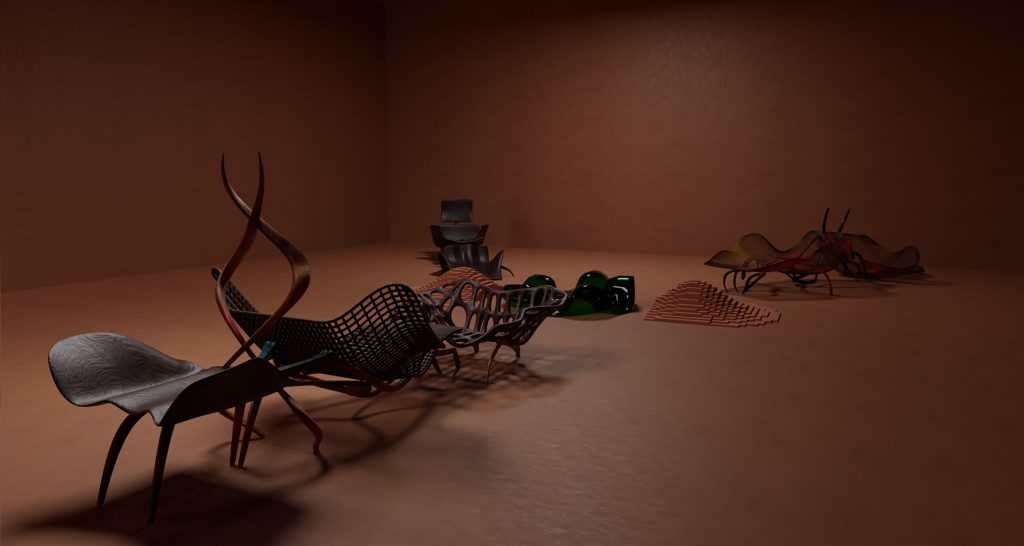
Designer & Curator: Omotunwase Osinaike
Natural Synthesis allows viewers to ponder the nature of collaboration and conflict in a traditional Nigerian courtyard setting. The pavilion points out the collaboration between the two most-known natural formations: the Sahara and the Amazon.
At the pavilion’s center is a metallic sculpture with sand on top. The sand flows through the ground, representing its journey through the Sahara to the Amazon each year. Even though the connection is not well-known, a collaboration between two sites is crucial for many species. Around the central insect-like sculpture, various pieces of furniture are inspired by natural forms and biomimicry. The project aims to inspire visitors by showcasing the unexpected collaboration. Natural Synthesis asks how, despite their numerous differences, mankind may find a way ahead in collaboration.
Create What’s Next
Created by: Plastic Free, powered by A Plastic Planet
Creative Partner: MadeThought
“Because everything begins with a design process. A bottle, a t-shirt, a building — nothing is made without a primary process of considered creation. Imagine if we were given a new set of tools, new materials, and new systems, that empowered us to think and design differently. Taking us away from the make, use, and waste of recent decades. Changing everything from the very beginning.” said PlasticFree.
The team describes itself as the world’s first and only materials intelligence platform, enabling the creative industry to forge a new future. The platform will provide the tools to educate and empower the design community to move the industry forward and create a better world.
Currently, they are showcasing a library of certified plastic-free materials, demonstrating how these new materials work in practice, inspiring content, and scientifically supported data. PlasticFree encourages people to change production, understand new materials, harmonize with the rapid global change, and trigger a better for everyone.
Poetic of Necessity (Poland)
Designers: T?O Micha? Sikorski Architects (Nicolò Signori, Micha? Sikorski)
Curators: Zofia Jaworowska, Micha? Sikorski, Petro Vladimirov
The globe relies on new groups and new processes during times of crisis, especially when existing resources shift and decline. Designers must shift their focus from aesthetics to usefulness while remaining inventive in their work. The Pavilion of Poland aims to reinterpret objects and tools that develop spontaneously during grassroots humanitarian aid initiatives.
Poetics of Necessity gets inspiration from the WINDOW project, in which Poles collected reusable windows for Ukrainians who were forced to leave the proper living conditions because of the war. The team emphasizes that while windows are mostly abandoned during renovations or destructions, the crises made them valuable unexpectedly not only from an environmental perspective but also for human survival.
The installation at the center of the pavilion showcases different connections and designs with windows in different shapes and sizes. The designs were created in collaboration between Zofia Jaworowska, Petro Vladimirov, and various local architects.
The Poetics of Necessity received the London Design Biennale 2023 Medal for the most outstanding overall contribution.
Open Your Mouth – a manifesto (Portugal)
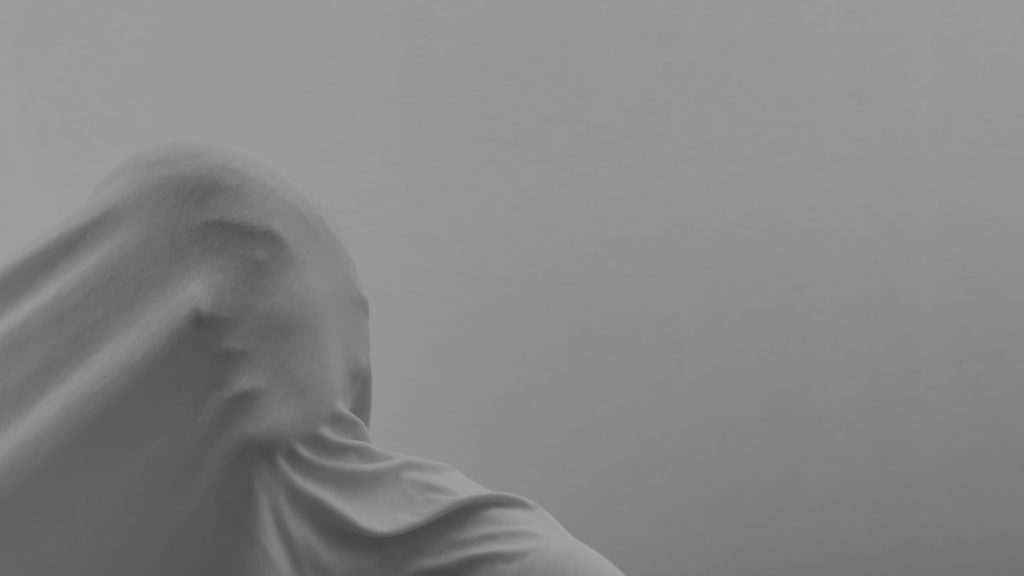
Artistic Direction: Rita Soeiro
Video: Rita Soeiro
Performer: Ángela Diaz Quintela
The installation from Portugal draws attention to the violence against women not being discussed. Open Your Mouth – A Manifesto is a video installation that aims to trigger worldwide discussions and put an end to this violent issue.
Artistic director Rita Soeiro has been working on the subject, and the installation aims to widen this research. During the exhibition, visitors are invited to explore and get to know the violence victims, their needs, and how to help them. The film includes the people who help and support victims, the volunteers who help the children, the care structures, emergency shelters, and the survivors.
Vatra Verde (Romania)
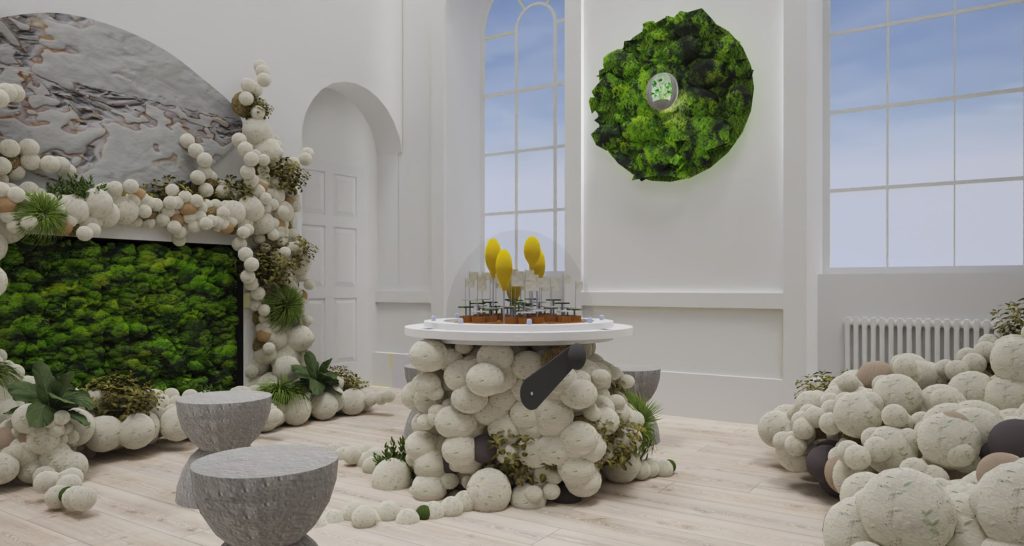
Designers: Cristina Cantemir, Cristina Maria Pop, Loana Vultur
Curator: George Ciprian Mihnea
The Romanian Pavilion aims to draw attention to the human impact on the planet. Vatra Verde in English means Green Hearth. The word “vatra” in Romanian refers to the fireplace that is the center of the traditional Romanian home and represents a place of origins, a place of roots, and a place to feel at one with nature. Green Hearth represents the heart of our home and is our whole connection with nature on Planet Earth.
The pavilion includes plantations on different mediums that are produced in various techniques. There is more than one attractive point of this pavilion. It is an interactive experience where visitors can touch the plants and hear their voices with the help of acoustics. Plants are popped out from mediums that are from different recycled materials such as paper, leather powder, plastic, metal, etc. The team used mycelium-based biodegradable glue to bond recycled materials together. This approach highlights the potential and power of mycelium in growing materials and substances.
The necessary electricity for the pavilion is being produced on the site. While visitors play with plants, they create kinetic energy which turns into a power for the acoustical system. Therefore visitors become a part of the loop in the pavilion.
Woven (Saudi Arabia)
Designers and Curators: Ruba Alkhaldi, Lojain Rafaa
The Pavilion of Saudi Arabia, Woven is a collaborative installation where the fabric of humanity and the future are weaved together. The idea is derived from the traditional artisanship of Al Sadu. Al Sadu, driven by women, represents a social collaboration where they gather together to work and support each other. It is important to culture and social impacts that inspire activities in different fields.
The installation invites visitors to experience weaving the fabric of humanity. Visitors participate in ‘weaving the future’ by collectively creating the textile on display throughout the Biennale.
134/Sacred Geometry (Serbia)
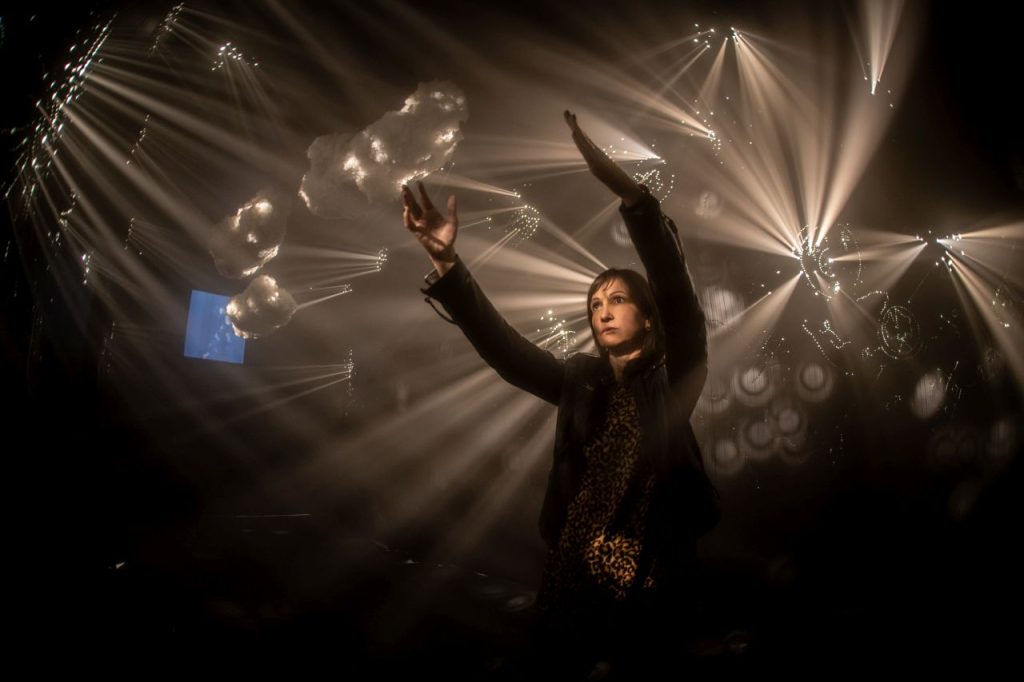
Concept and Design: Biljana Joti?, Dušan Jovovi?
The Pavilion of Serbia examines the origins of the term design. 134/Sacred Geometry seeks to establish a relationship between modern design and theological tradition and how those two things relate to emerging technologies. Which techniques—from cosmology to artificial intelligence—can help us comprehend the connection between people and the environment in which we live?
The pavilion’s center contains a piece that draws inspiration from medieval Serbian ornaments. This installation aims to show the collaboration between technologies as light and AI video highlights the relationship between humans and machines.
Virtuous Garden (South Korea)
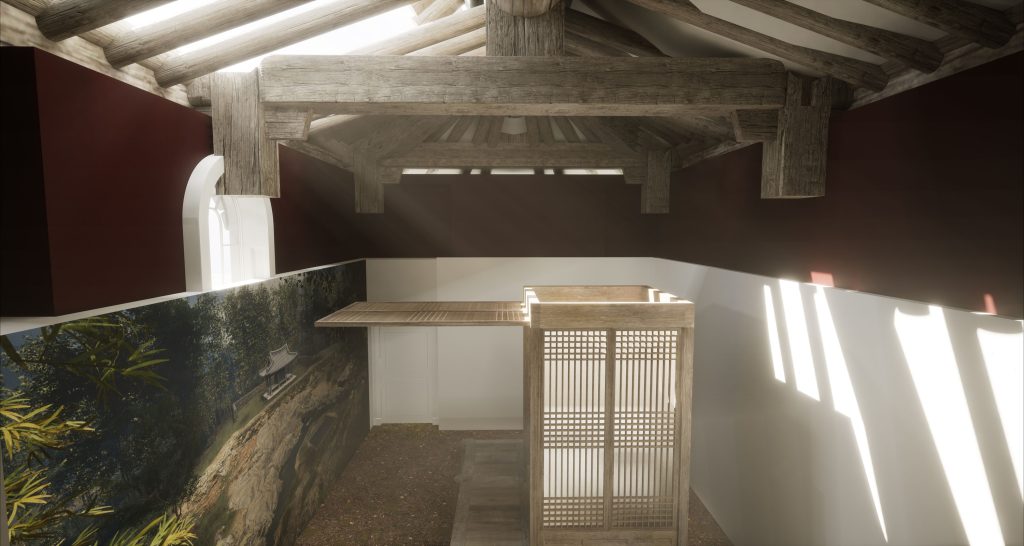
Artist: Jung Jin Song
Curation: Hye Won Chang, Dijun Sha
The South Korean Pavilion makes the case that by adhering to the ideals of balance, coexistence, and collaboration, design from earlier traditions can aid in bridging the gap between people, nature, and the current and future worlds.
The pavilion contains physical and virtual elements. Visitors can sit or lie down and relax while listening to Geomungo music and watching the film Shadow of the Bamboo. At the center of the pavilion, there is a platform that is made from reclaimed wood. The structure aims to showcase physical and virtual platforms for ecological inspiration within a circular economy, reusing waste and minimizing resources.
The design aims to develop the new traditional reaction to legacy and craftsmanship for the following generation. Everyone is looking for creative and innovative ways to recall the heritage and modernize techniques to make them more sustainable.
Common Vibrations (Spain & Peru)
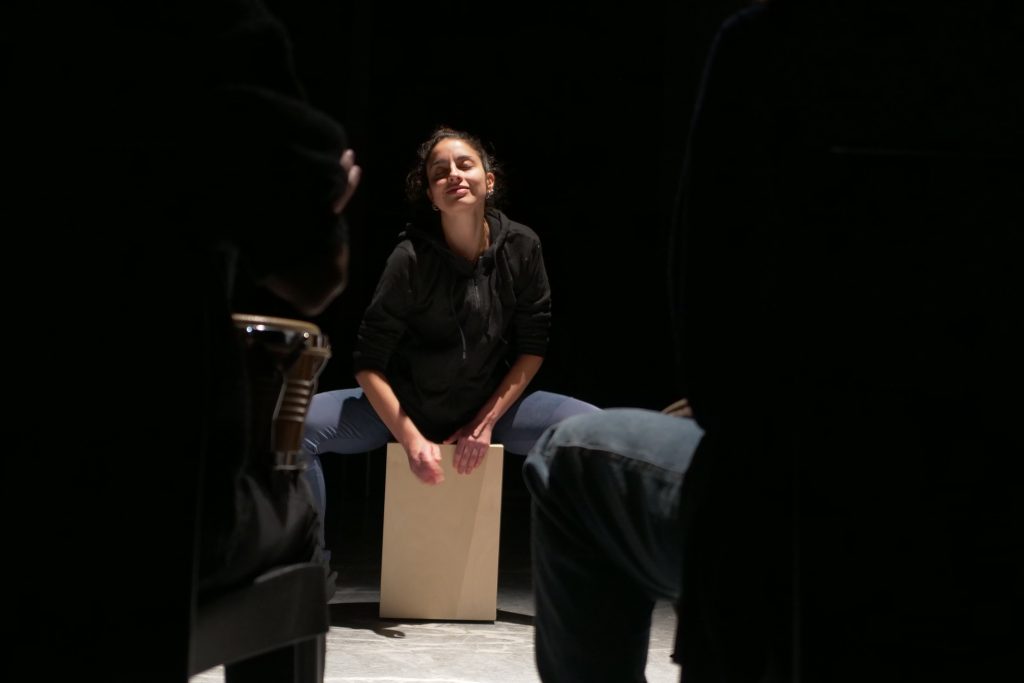
Designers: Escuela de Arquitectura de Toledo (Spain), Escuela de Arquitectura de la Universidad Católica de Santa María (Perú), Escuela SUR, (Spain)
Curator: Covadonga Blasco Veganzones
The audiovisual installation Common Vibrations uses the cajón, a percussion instrument, to highlight the shared cultural heritage of Spain and Peru. Using a simple wooden box, Common Vibrations demonstrates a universal language that two nations share. The device turns into a way for us to communicate through our bodies without using words. Three interconnected components make up the installation: the tablao in which the cajónes are displayed; a sound and vision performance by two percussionists who are based in both Spain and Peru; and a map illustrating the ethnic relationship between the instrument and the region.
The instrument’s history is also included in the scholarly conversation in this highly collaborative undertaking. The installation’s ideation, design, and construction involved more than 50 students from several design and architectural institutions in Madrid, Toledo, and Arequipa.
Visible Shop (Taiwan)

Designers: Serendipity Studio (Ling-Li Tseng, Chia-Shu Wang, Hsien Chen), Loudly Lightning Studio (Chung-Han Yao, Jui-Pin Tseng, Ling-Wei Chang)
Curator: Ling-Li Tseng
The Taiwan Pavilion highlights the nation as an international trade hub and a crucial link in the global supply chain for manufacturing. Even though Taiwan is a small island, its peculiar position and physical features have been important to industrial cooperation.
The pavilion serves as a visual shop that represents the unique economy of small and medium-sized enterprises. With the metal supply area and the workshop, the installation illustrates Taiwan’s collaborative industries, which are entirely independent and reflect the country’s diversity. Also, the project revealed a video; Visible Shop – Parts without Cover, as a trailer for the pavilion that showcases the country.
The Taiwan Pavilion with the Visible Shop project received the London Design Biennale Best Design Medal for the most exceptional design.
Open Work (Turkiye)
Designer and Curator: Melek Zeynep Bulut
The Pavilion of Turkiye inhabits the OpenWork by artist and architect Melek Zeynep Bulut. As in the project description, OpenWork is a performative space and a theatrical exhibition of transitions. Located at the center courtyard of Somerset House, the installation invites visitors to play with the audible surfaces.
The installation is made from resonating audible surfaces that are designed as metaphorical gates. The pavilion draws attention to the concepts of gates and liminality that represent power, setting borders, and social hierarchy throughout world history. The installation aims to blur boundaries between the visitor, the installation, the ground, time, power, and borders.
The New European Bauhaus (The European Union Delegation to the United Kingdom)
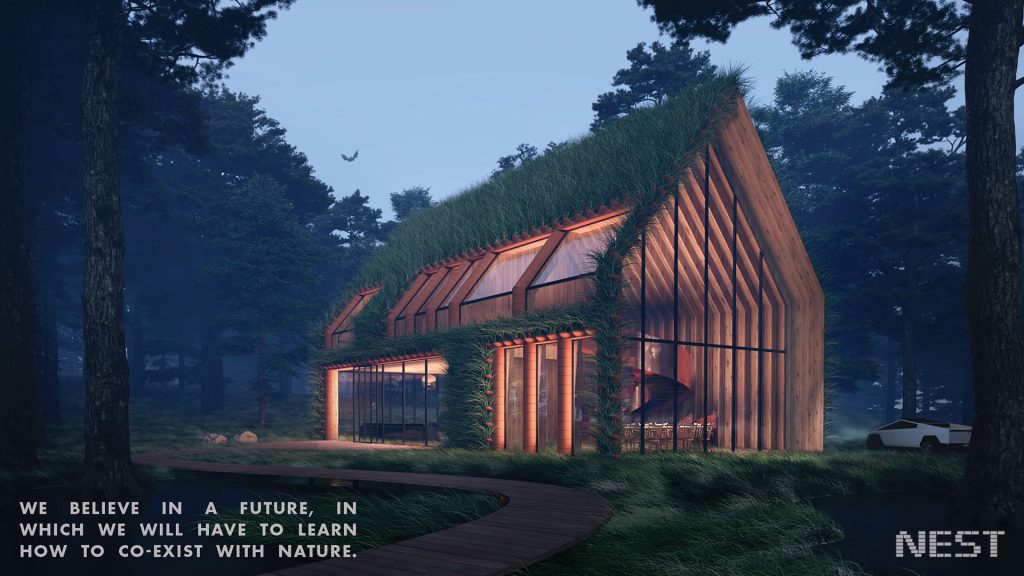
Creative Team: Dr Federico Bianchi, Zita Storring
Organising Institutions: European Union Delegation to the United Kingdom, New European Bauhaus, Joint Research Centre of the European Commission
The New European Bauhaus movement aims to facilitate the transformation of European societies by considering three important concepts: sustainability, aesthetics, and inclusion. Inspired by the 1919’s Bauhaus movement, founded by Walter Gropius, which highlights embracing collaboration across different disciplines; the project aims to build a greener future. One of the goals of the New European Bauhaus movement is to deliver the European Green Deal, a package of policy initiatives that strive to make Europe the first climate-neutral continent.
The darkest hour is just before dawn (Ukraine)
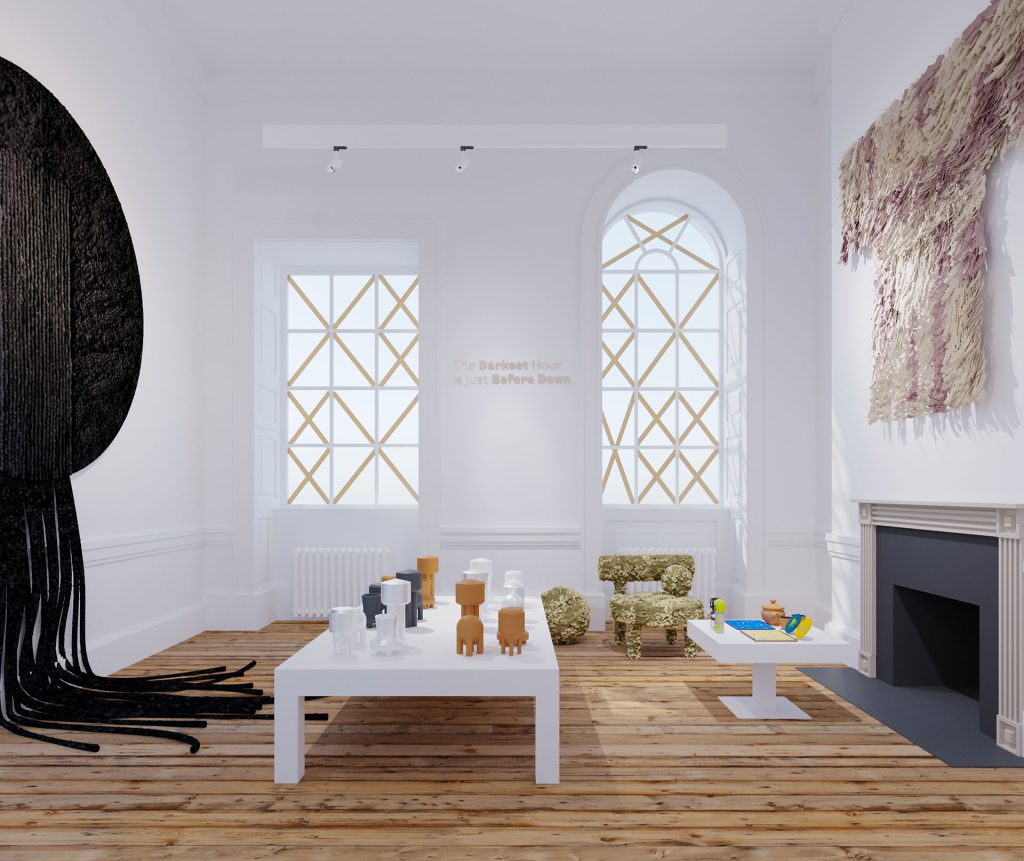
Designers: Viktoria Yakusha, Sergiy Hotvianskyi, Kateryna Sokolova
While facing a shortage of basic resources due to war, designers from Ukraine want to show that even through the taped windows of their homes, during times of blackout, they can see opportunities for fruitful cooperation with the democratic free world and can implement the most daring design ideas.
Ukraine has always been a key area for communication operations, where traditions were carefully revisited, ideas were exchanged, bold collaborations were implemented, and new ways of cooperation were found because of its liminal position between the conditional West and East. The Ukranian Pavilion’s “The Darkest Hour is Just Before Dawn” installation offers stories of design initiatives that enable the planet’s creators to communicate in the same language—the language of global peace, advancement, and life.
A Species Between Worlds: Our Nature, Our Screens (USA)
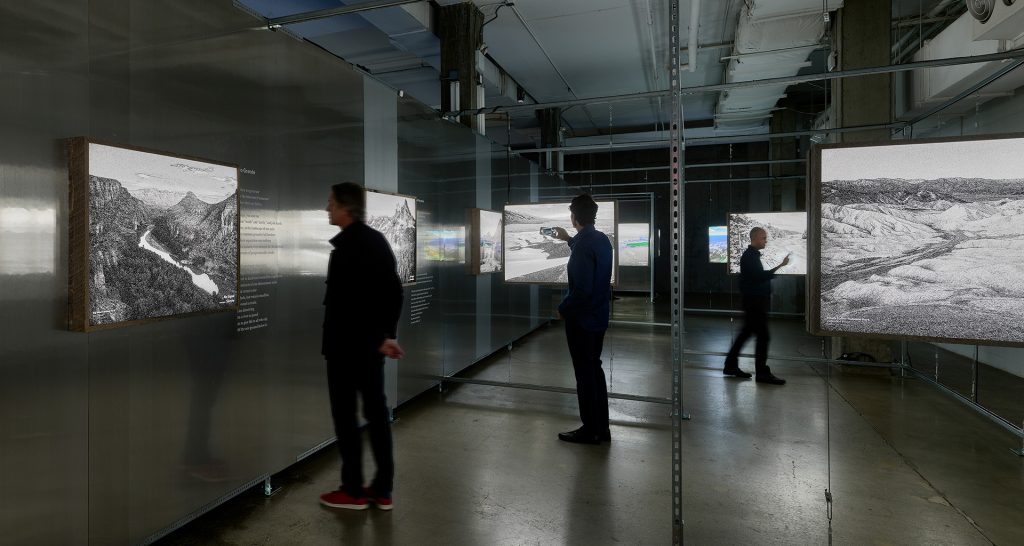
Author: John Mack
Programming: Life Calling
Design Architect: MESH Architectures
The Pavilion of USA hosts the installation A Species Between Worlds: Our Nature, Our Screens. The installation highlights the fact that Silicon Valley is designing the world’s future landscape. Virtual universes are rapidly developing on our flat screens and replacing the depth of our natural world.
The author and artist John Mack founded the non-profit organization Life Calling to preserve humanity in the Digital Age. The pavilion points out attention-grabbing apps such as email, Meta, TikTok, Instagram, Twitter, Snapchat, and various other hits. In the exhibition, he worked in collaboration and designed a space with Duratrans printing and lightboxes. What is presented reveals the digital environment, our commitments to it, and the uncertain fate of our nature.




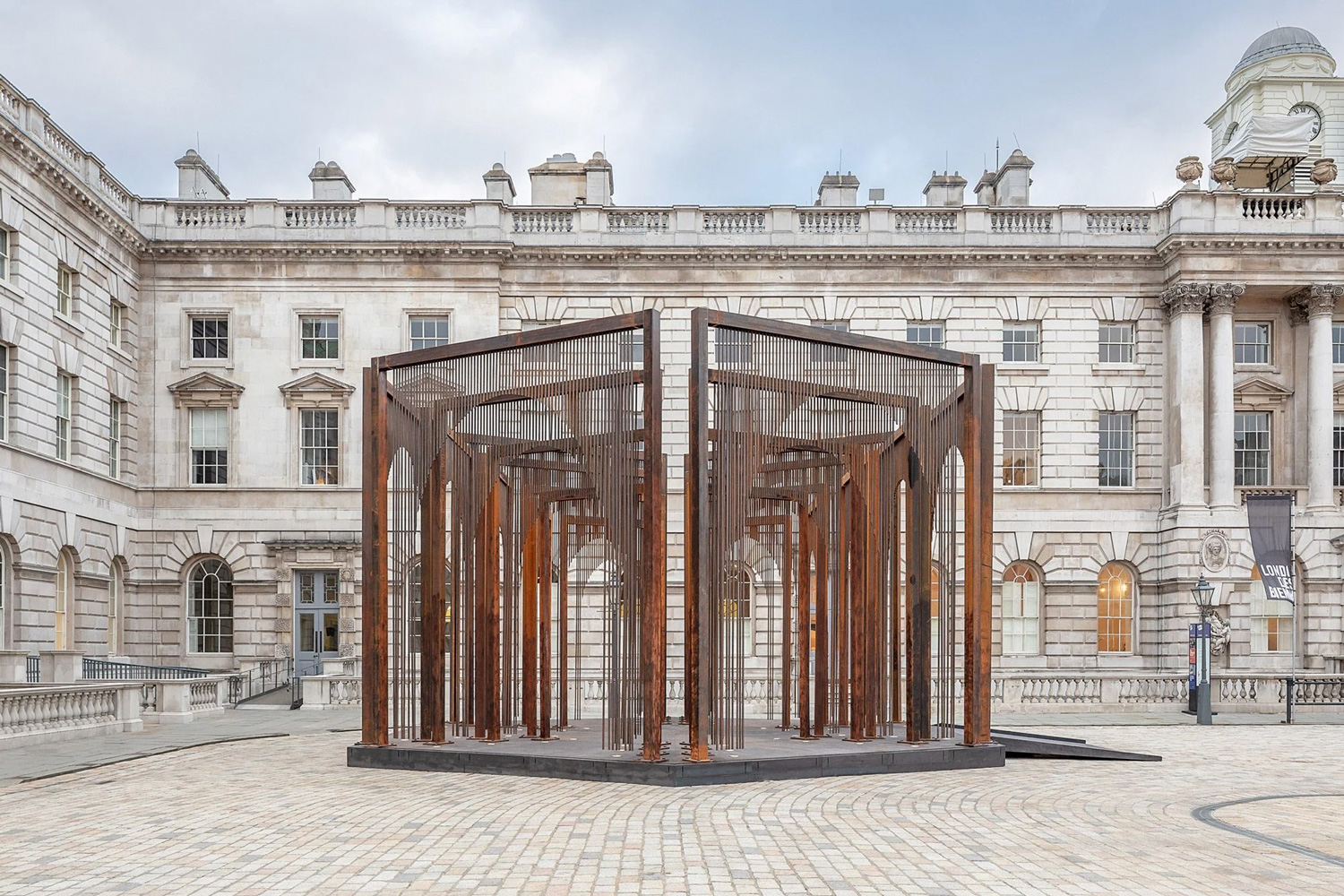
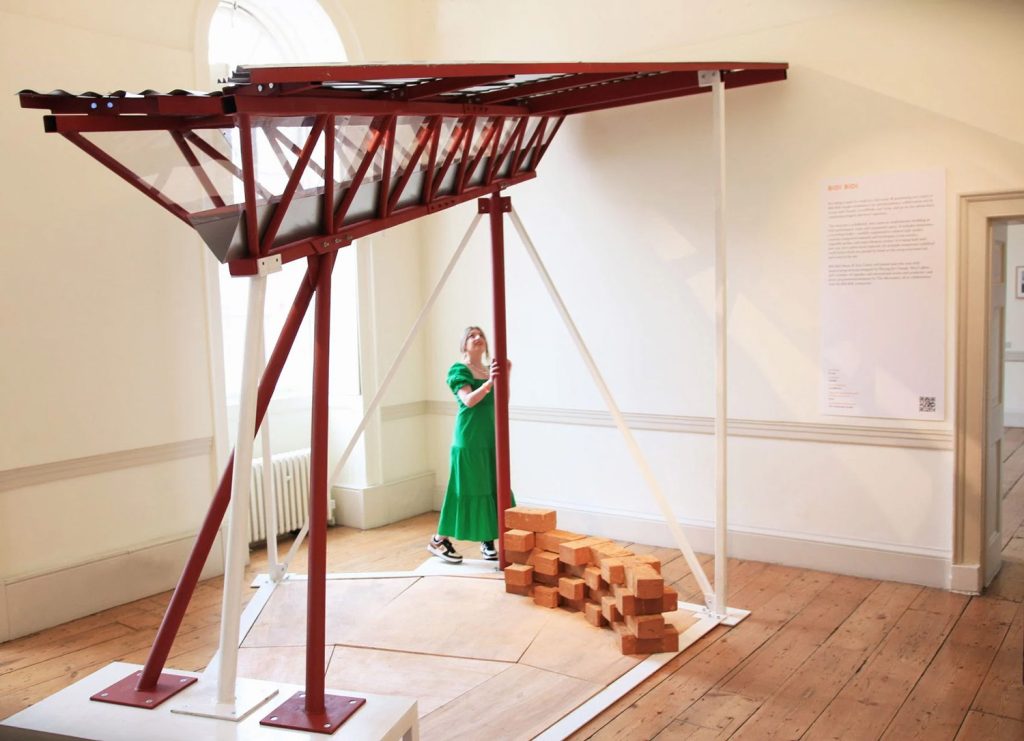
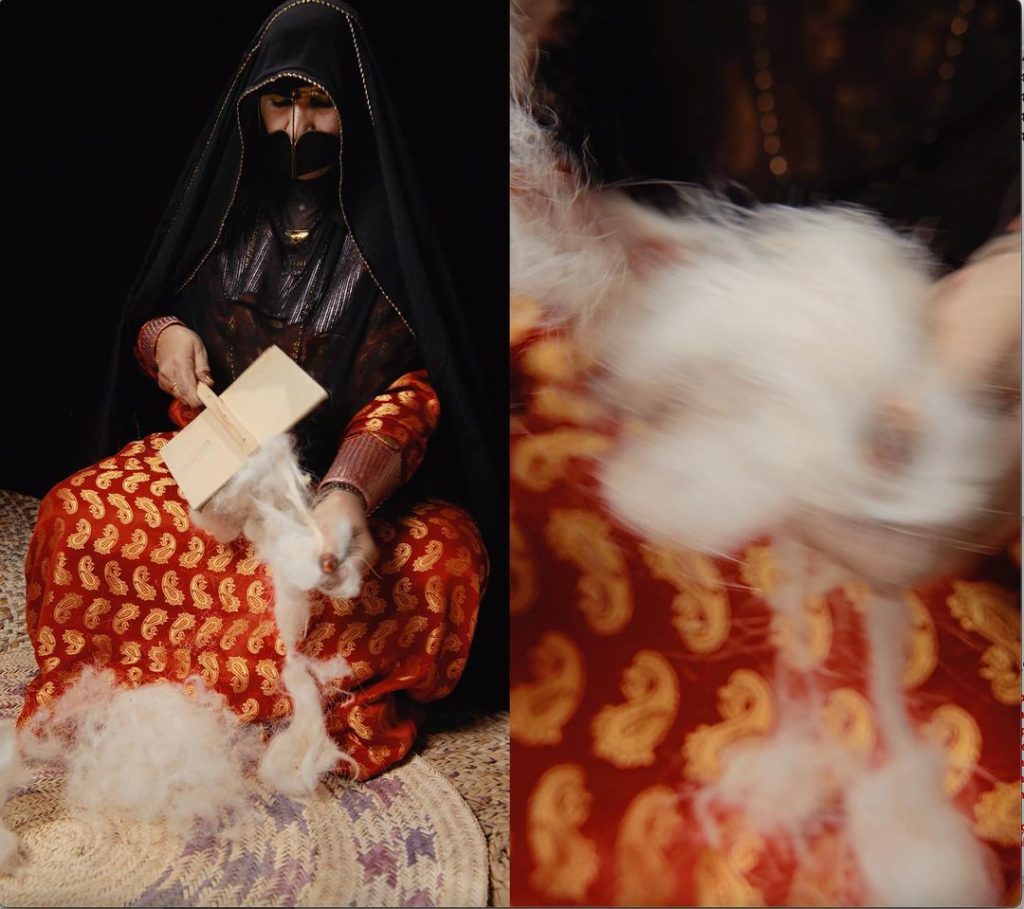
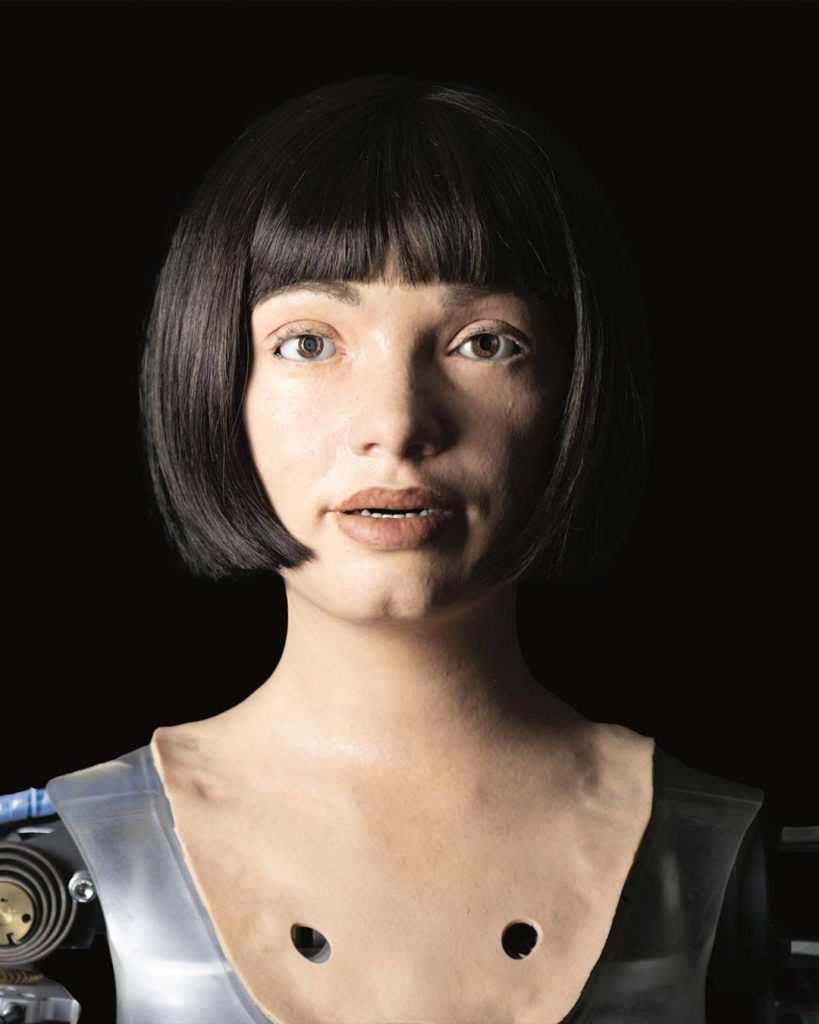
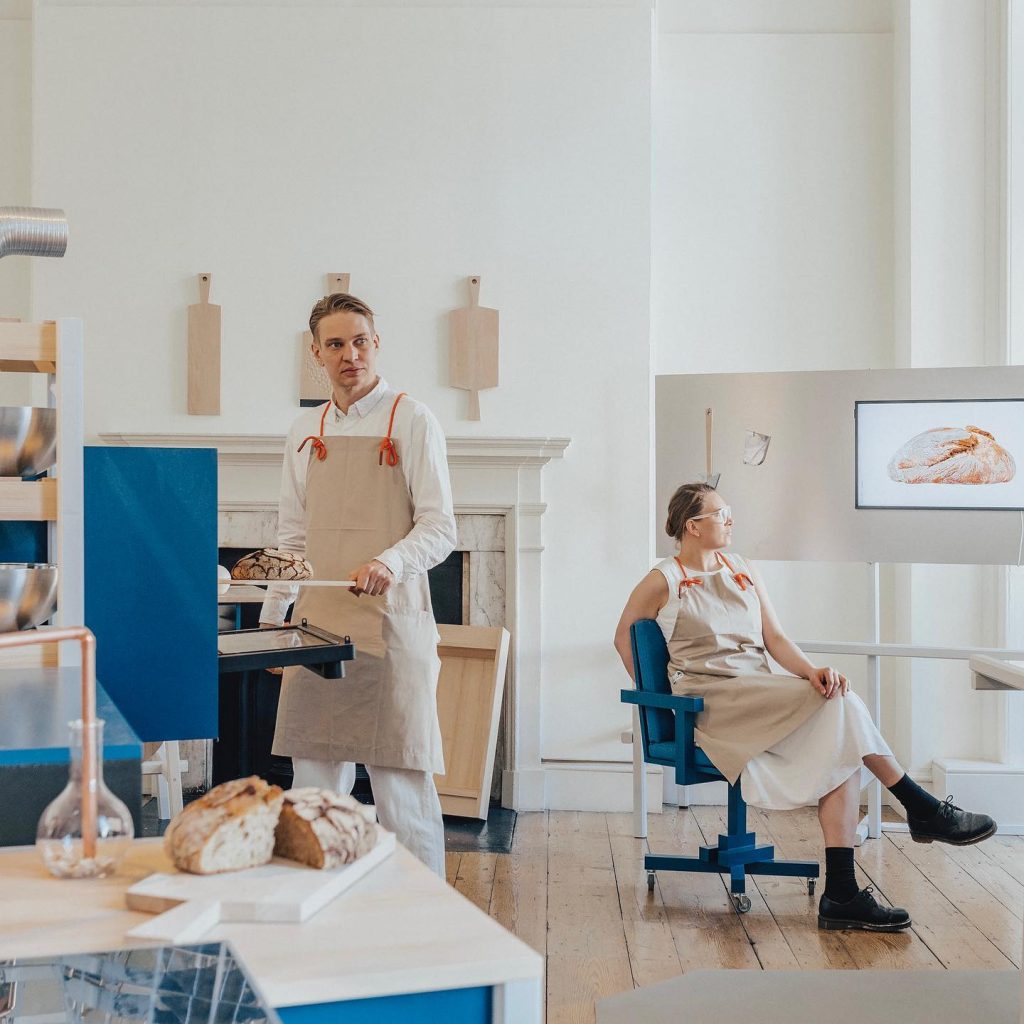
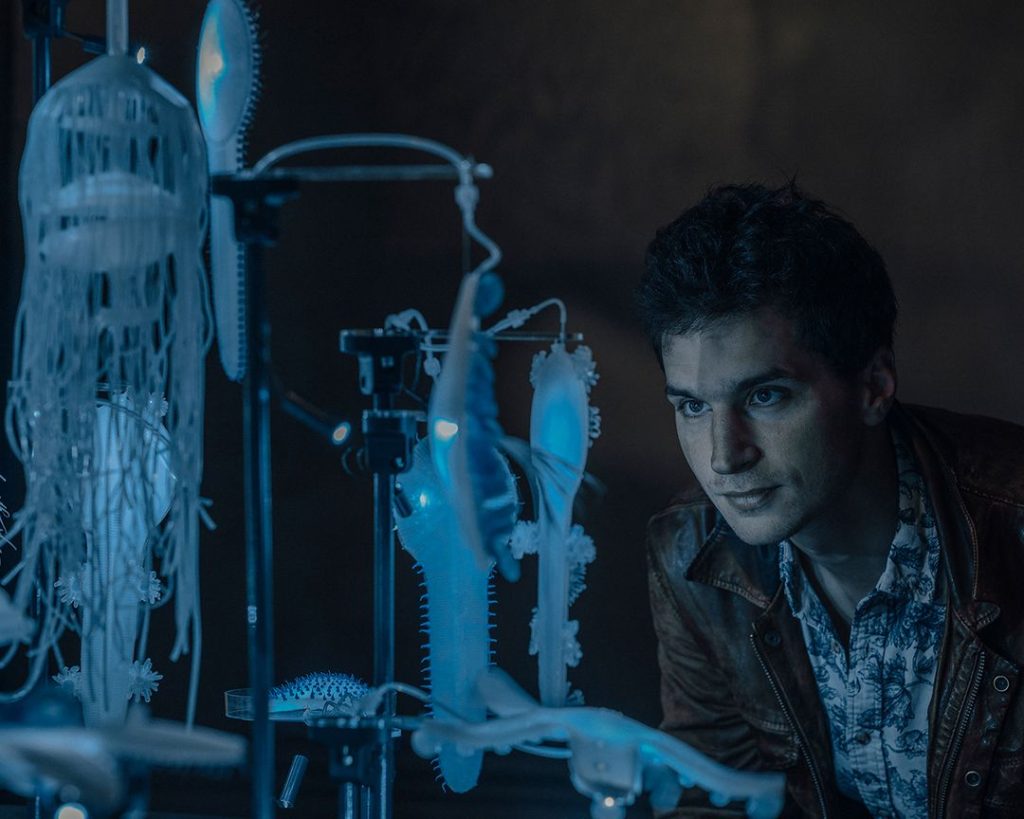
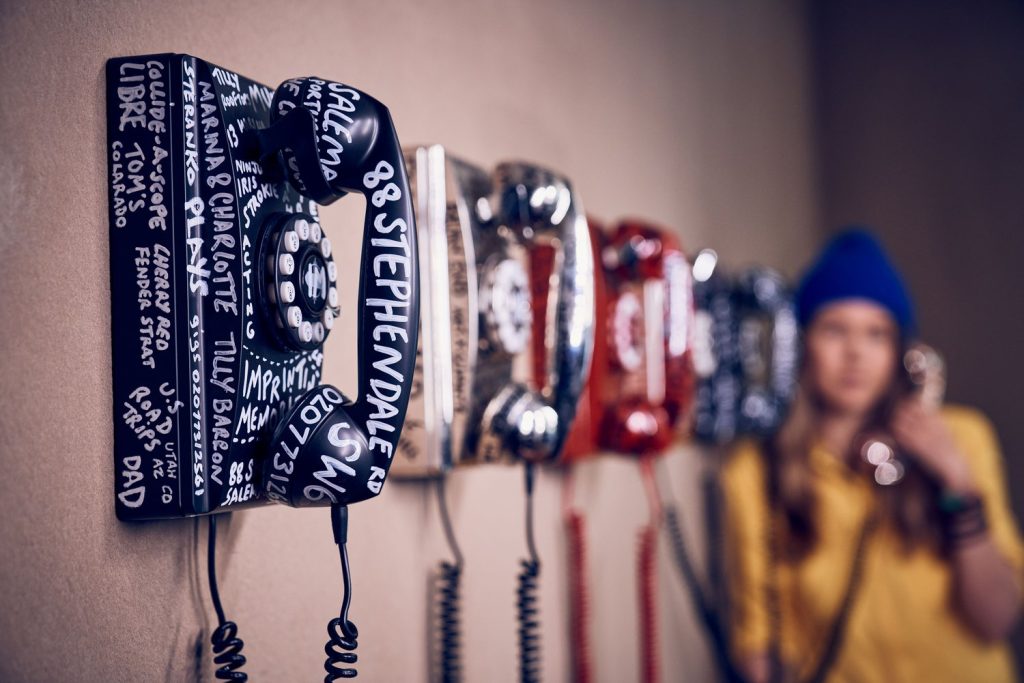
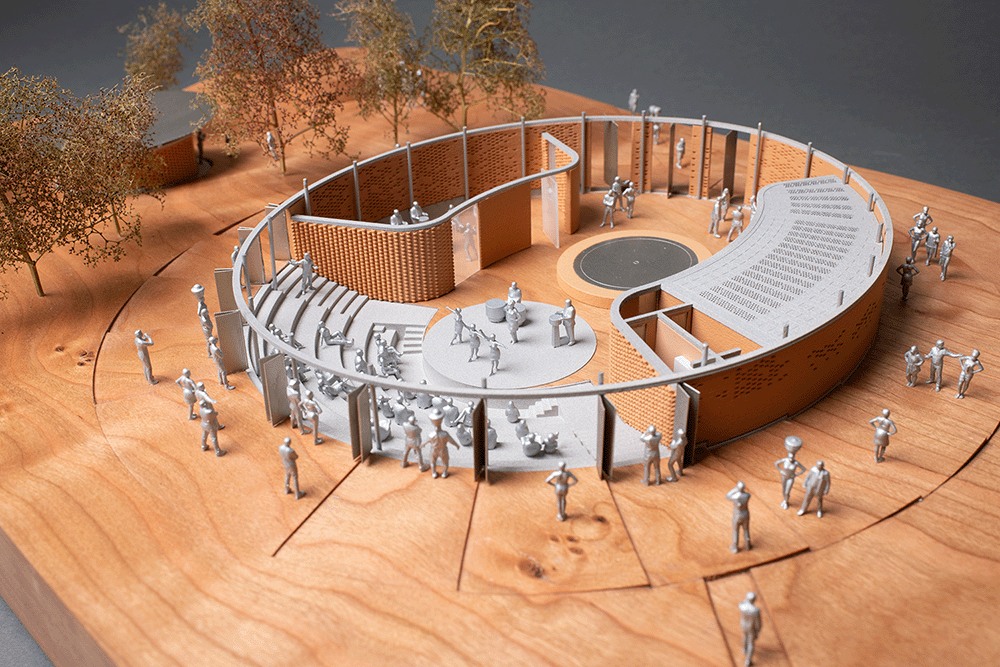
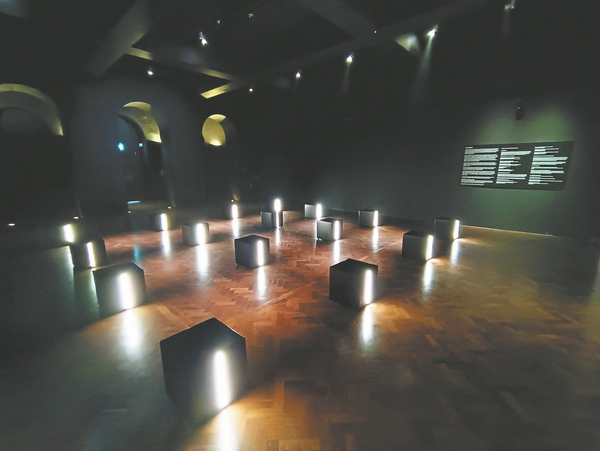
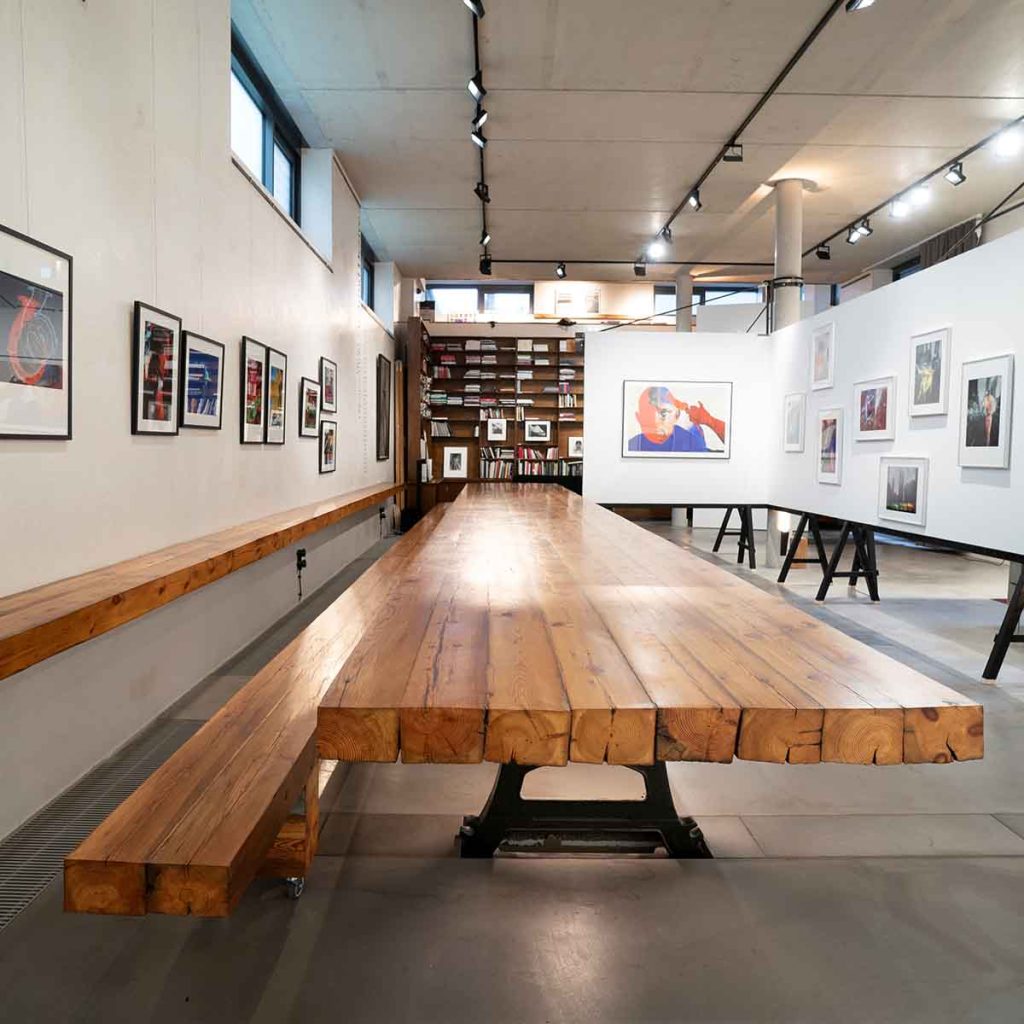
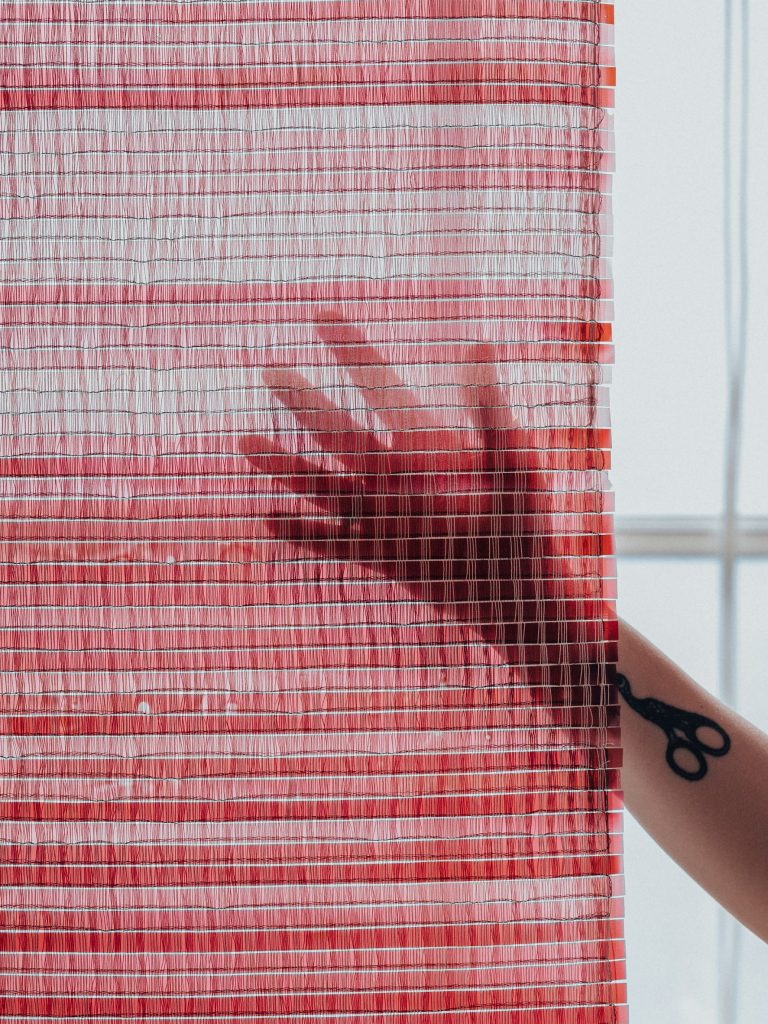
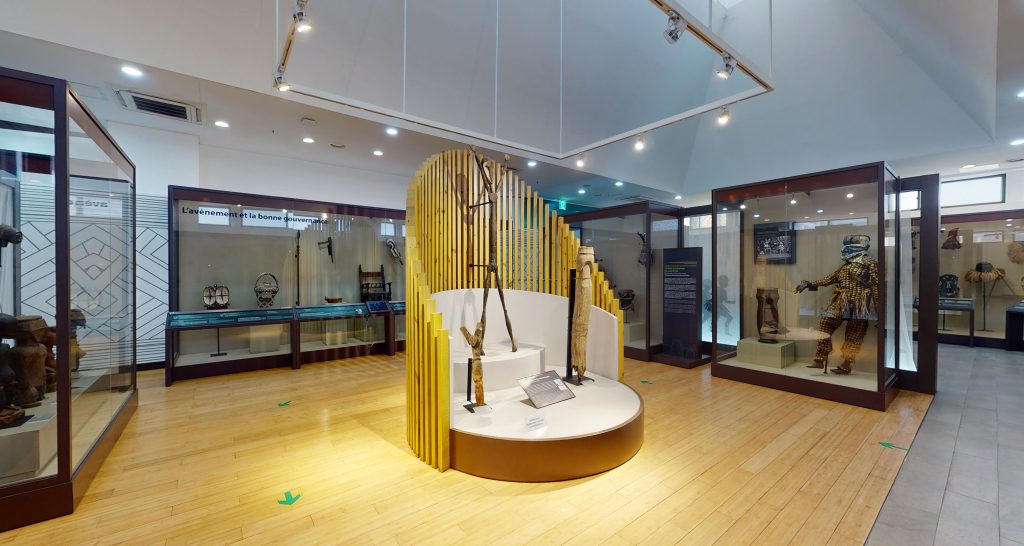
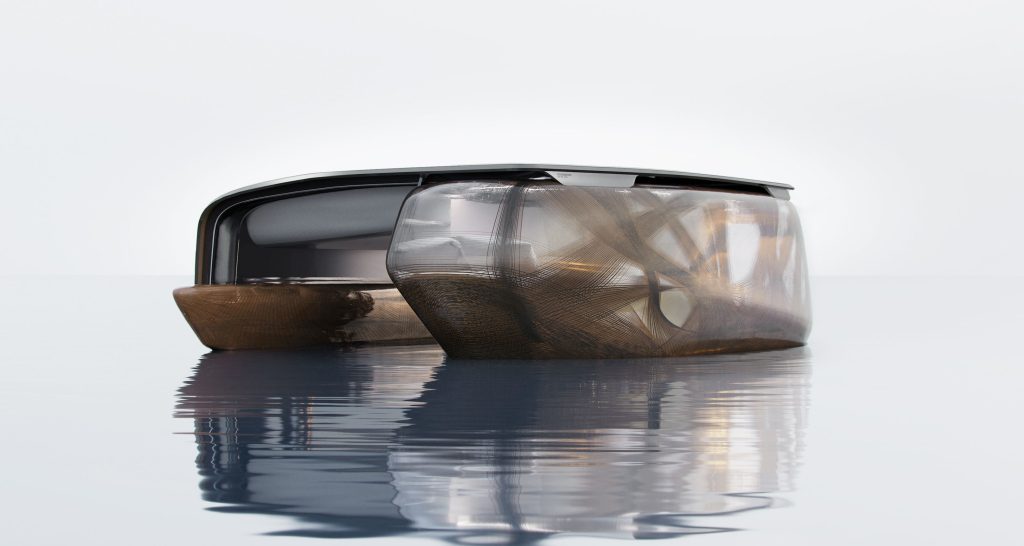
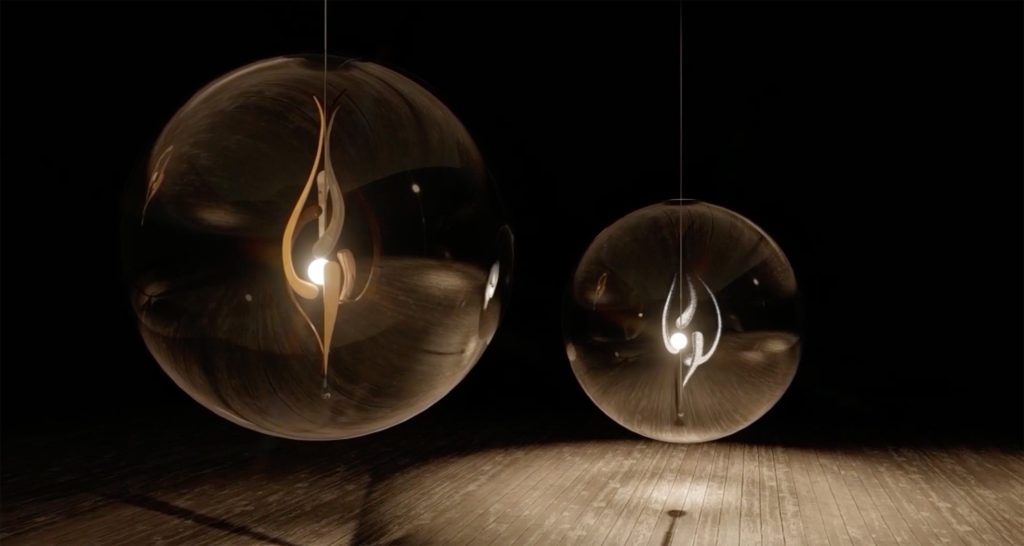
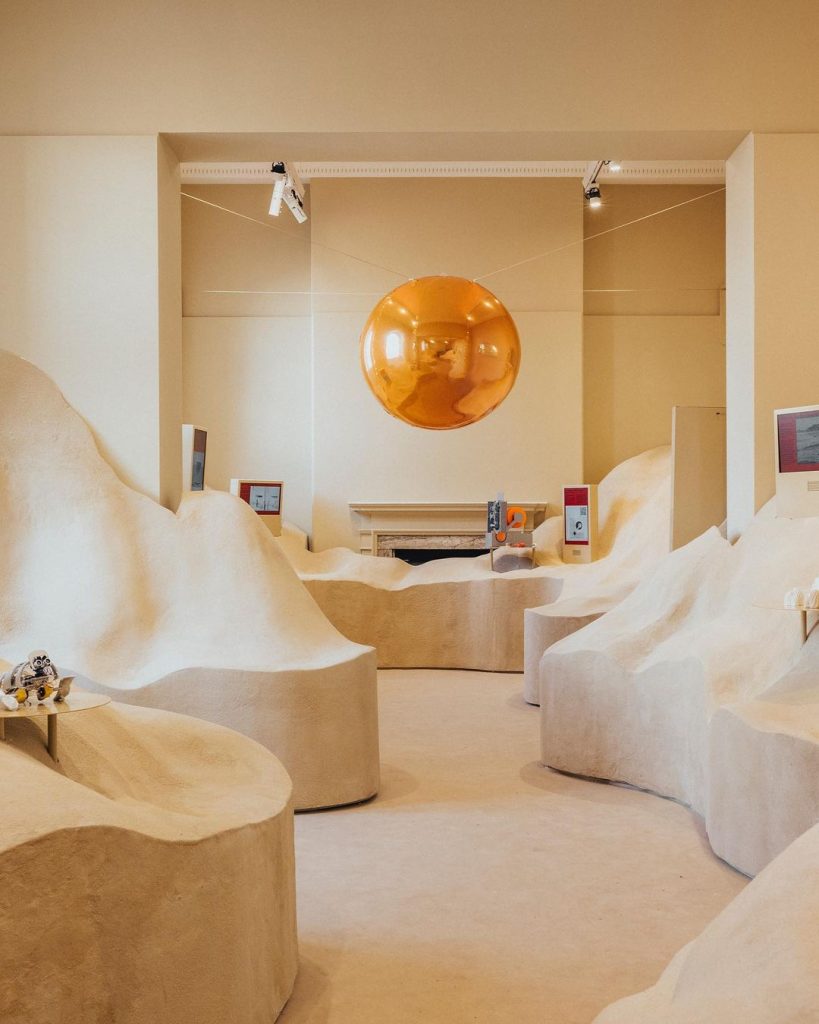
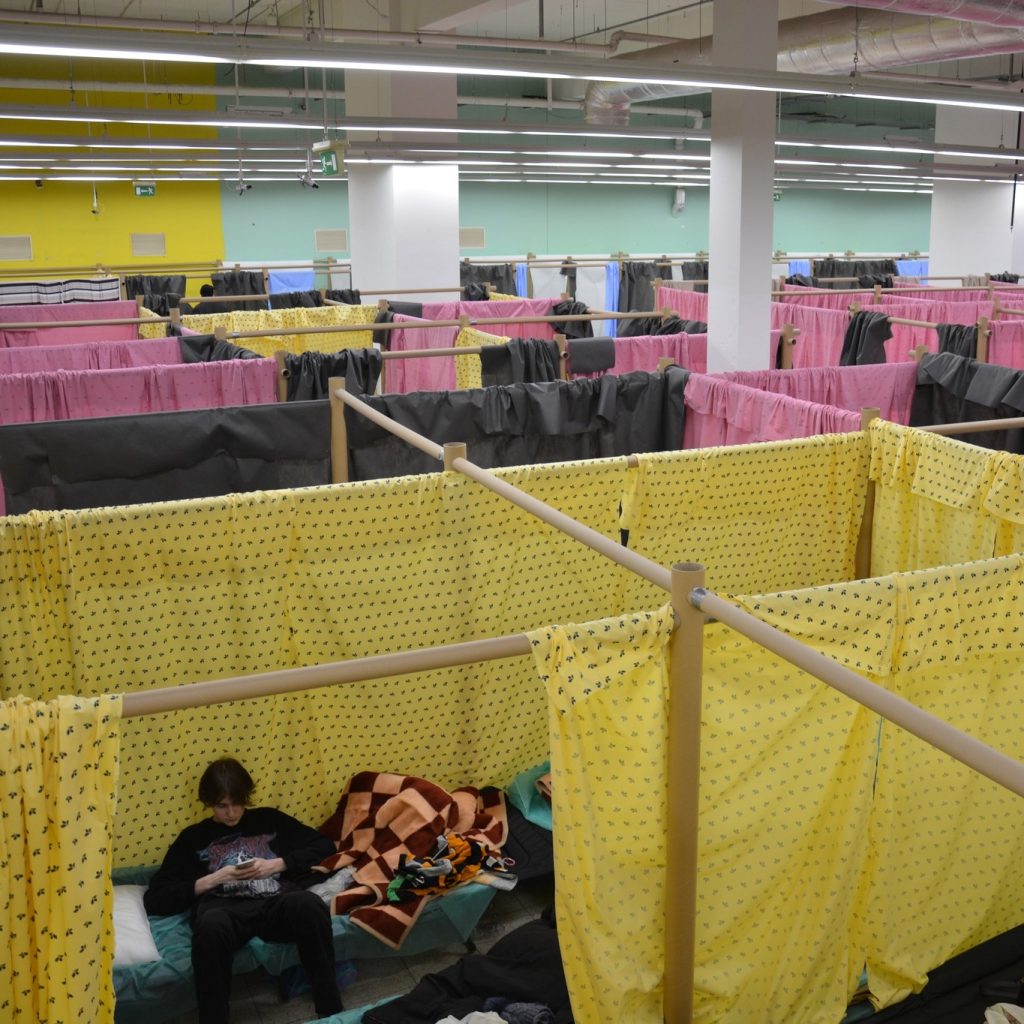
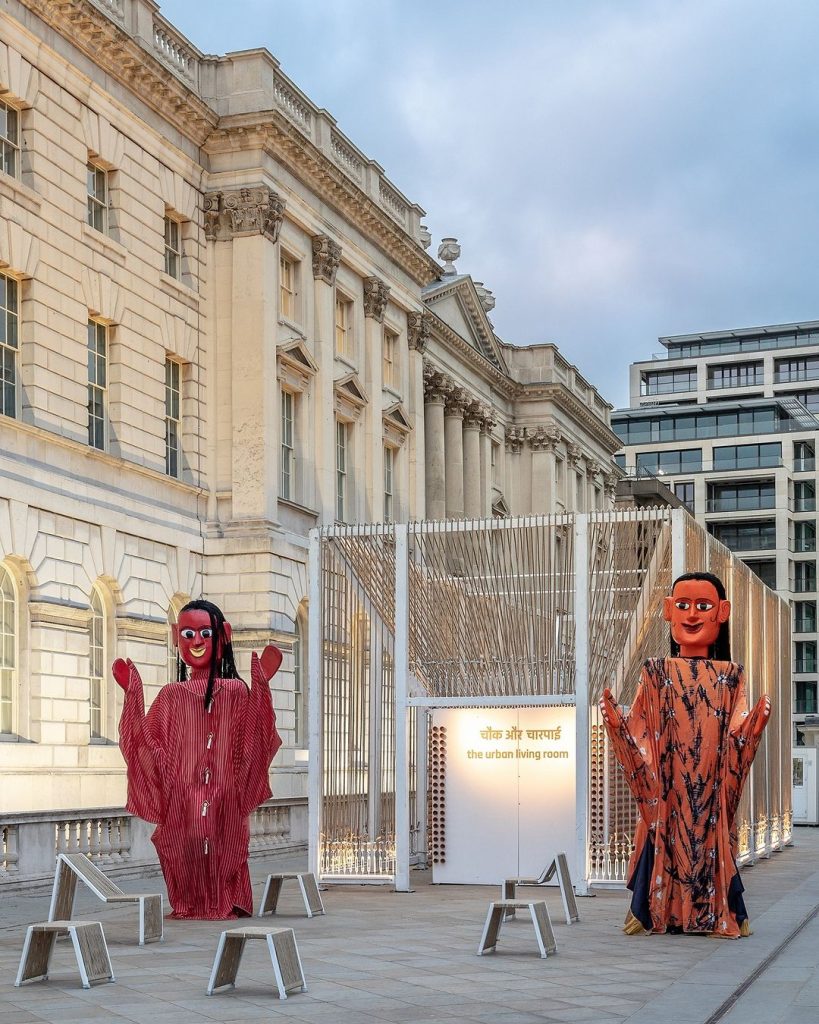
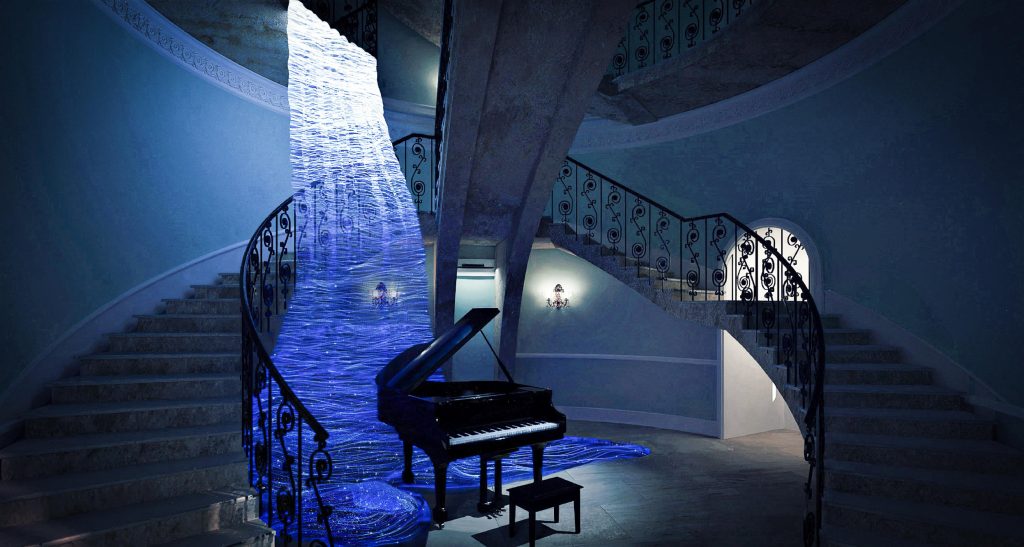
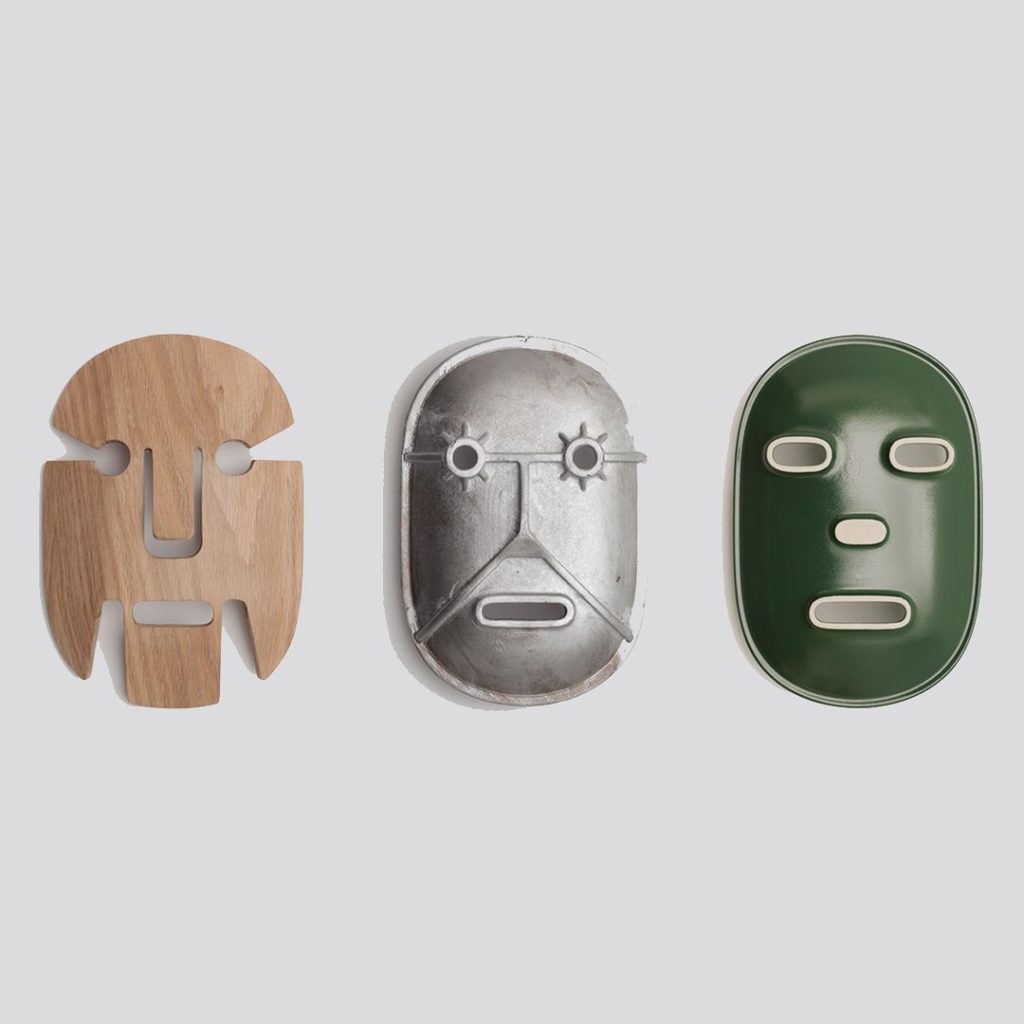
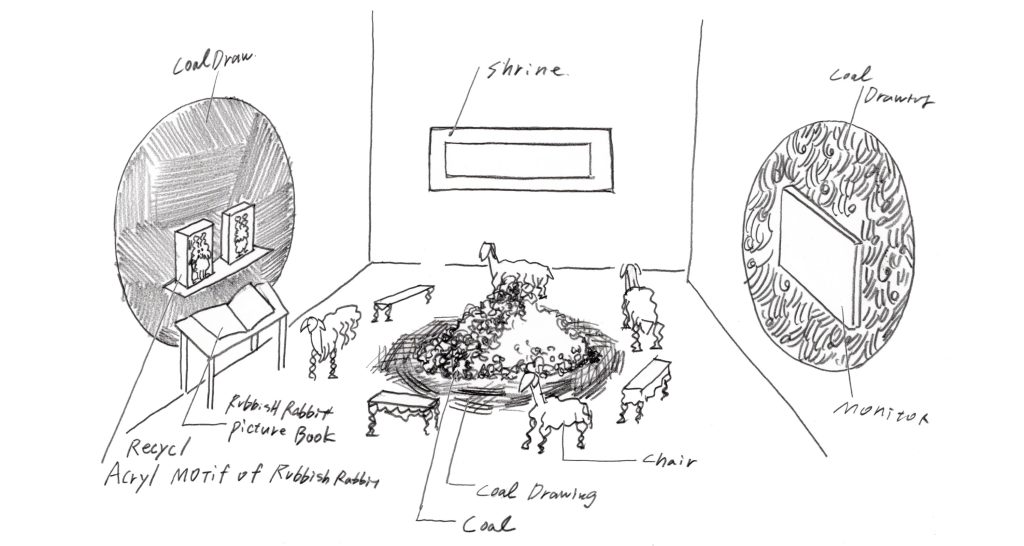
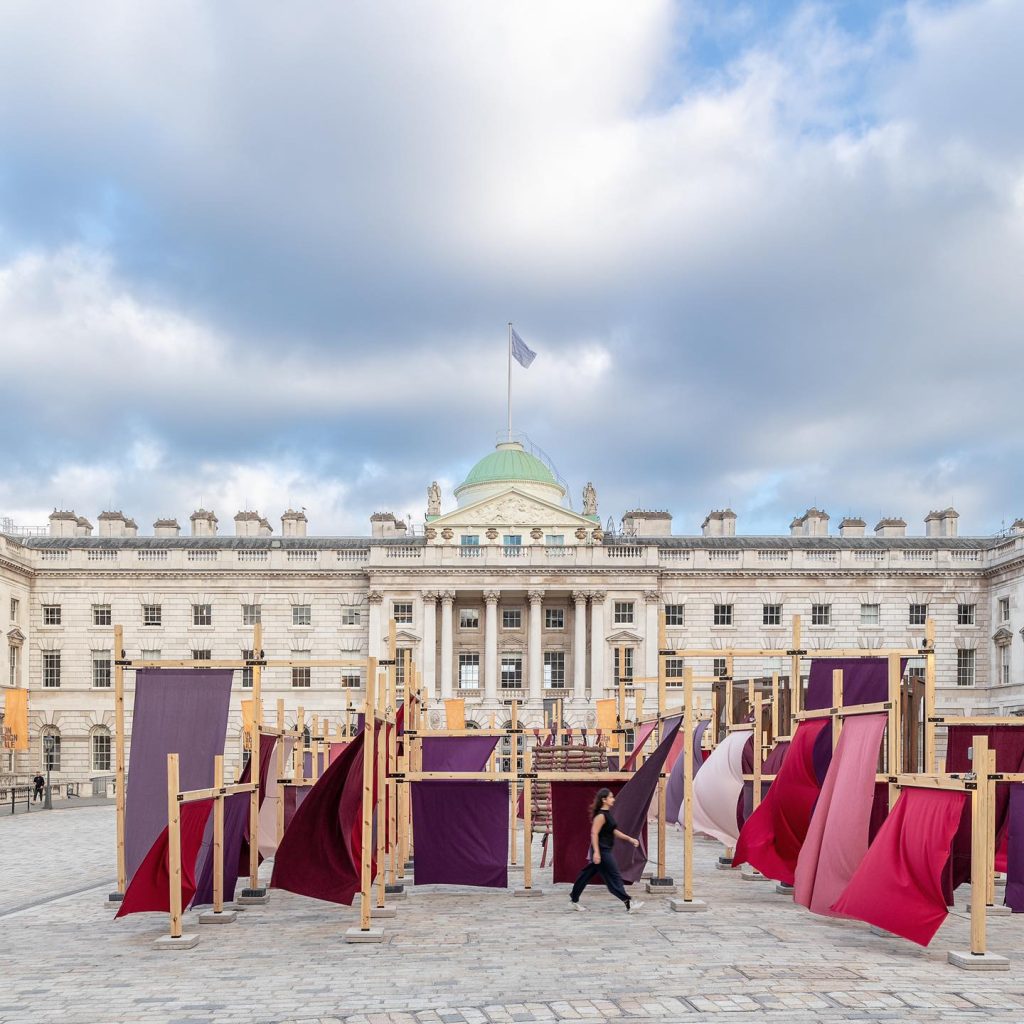
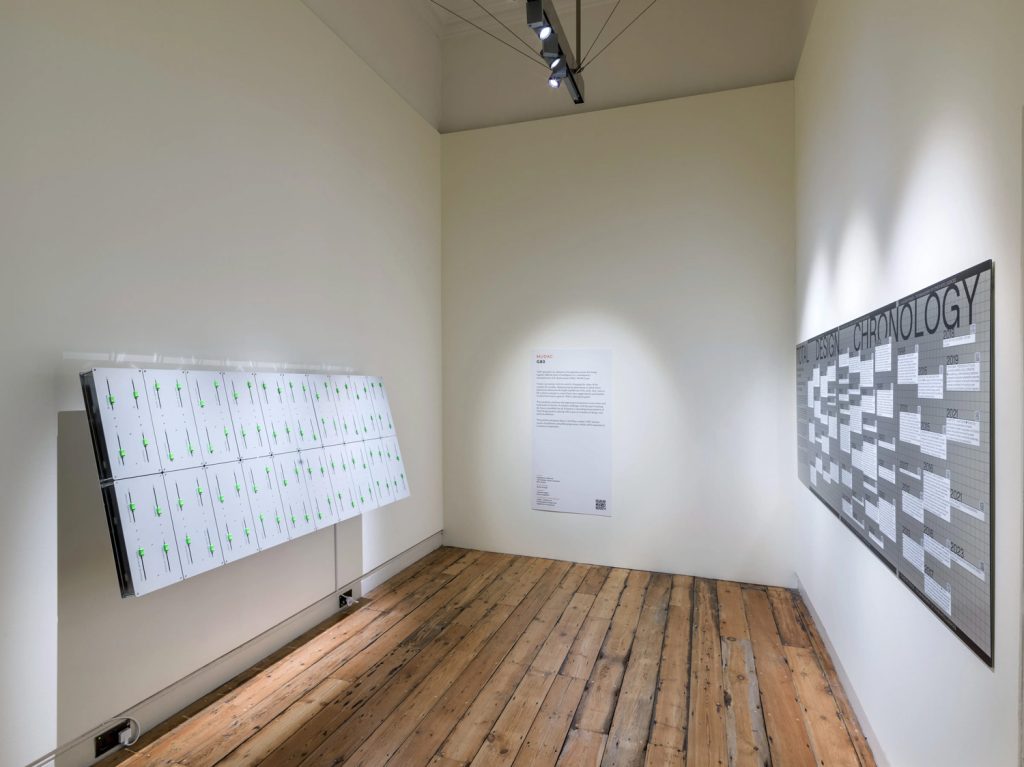
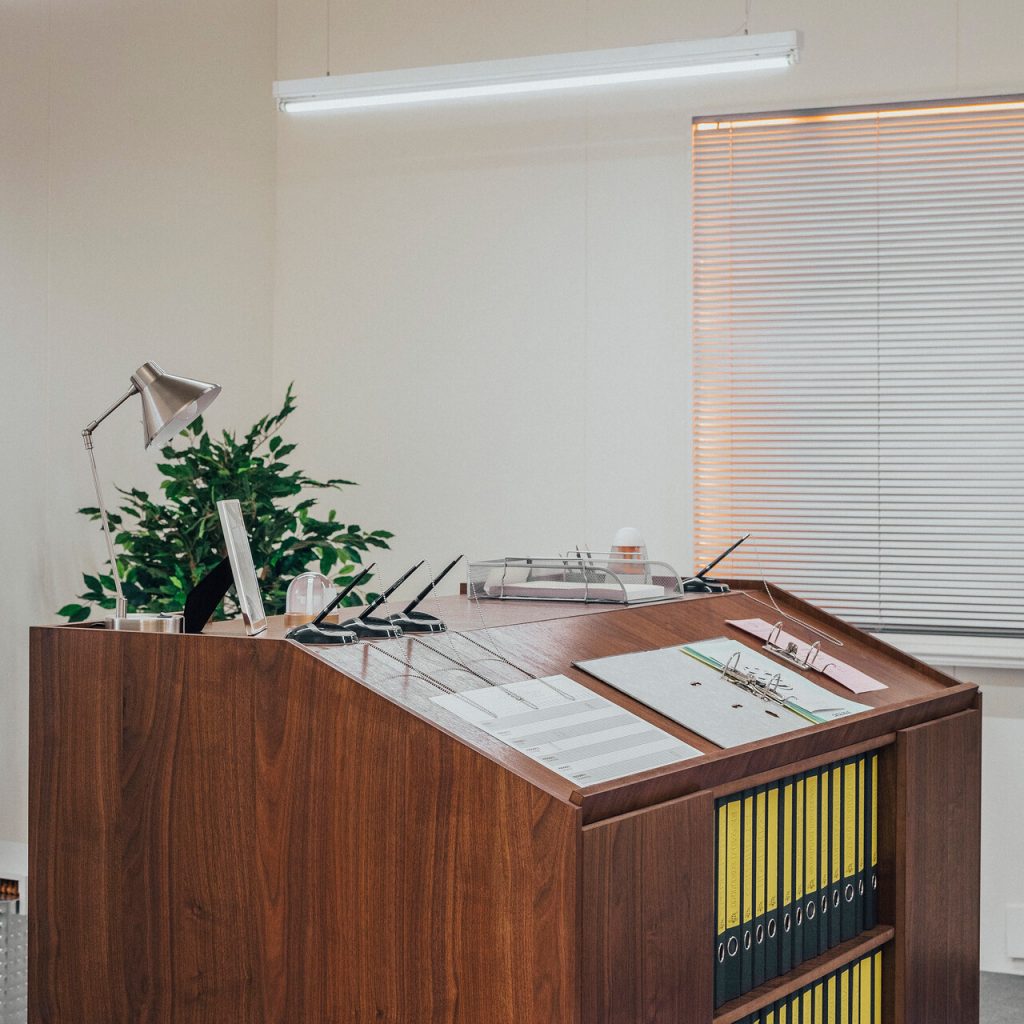
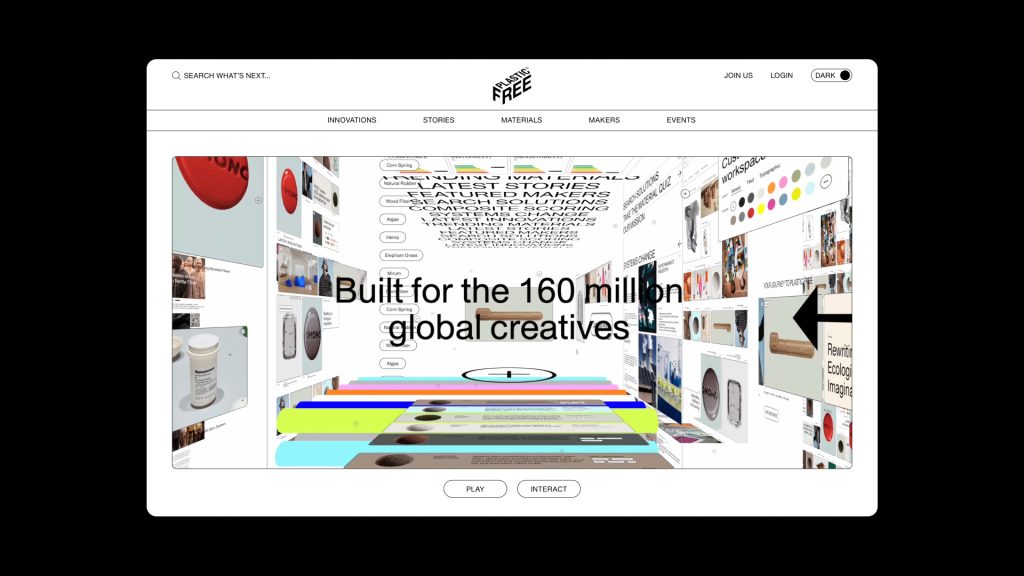
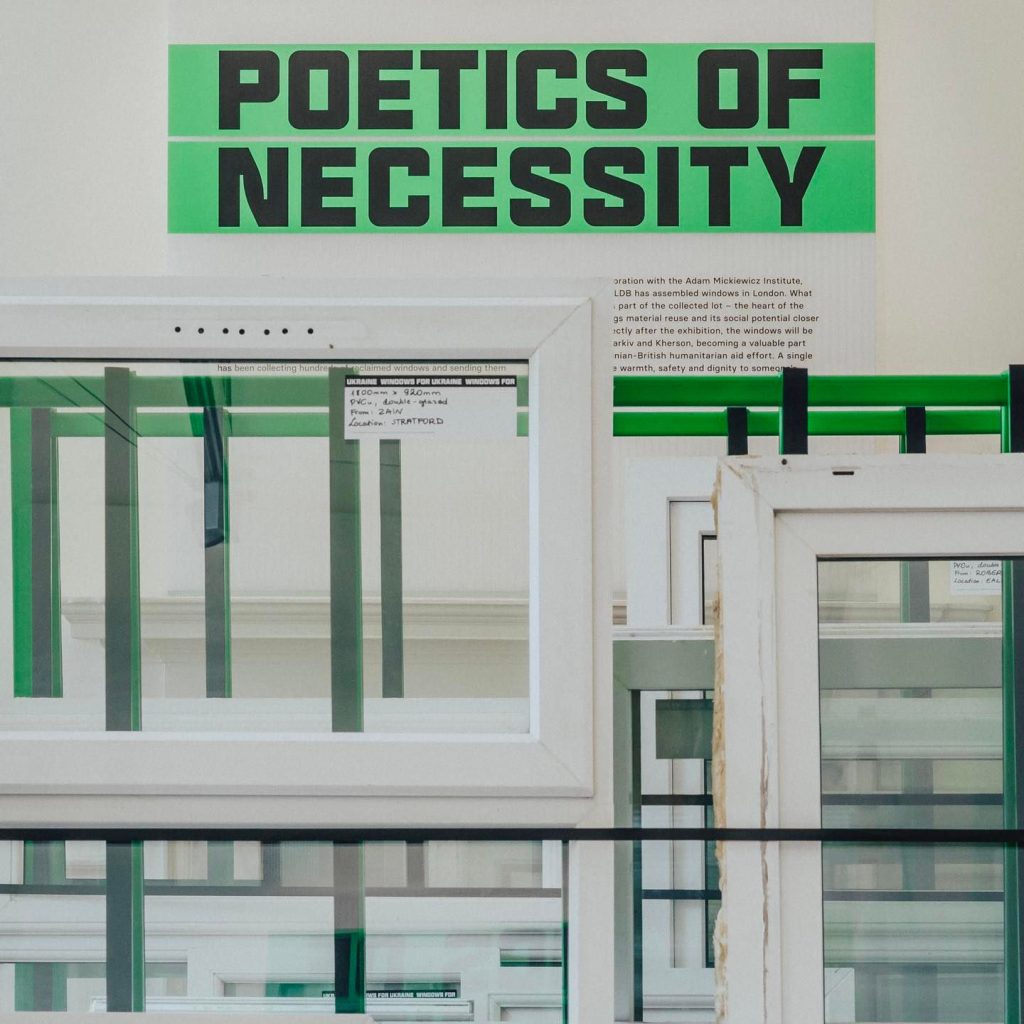
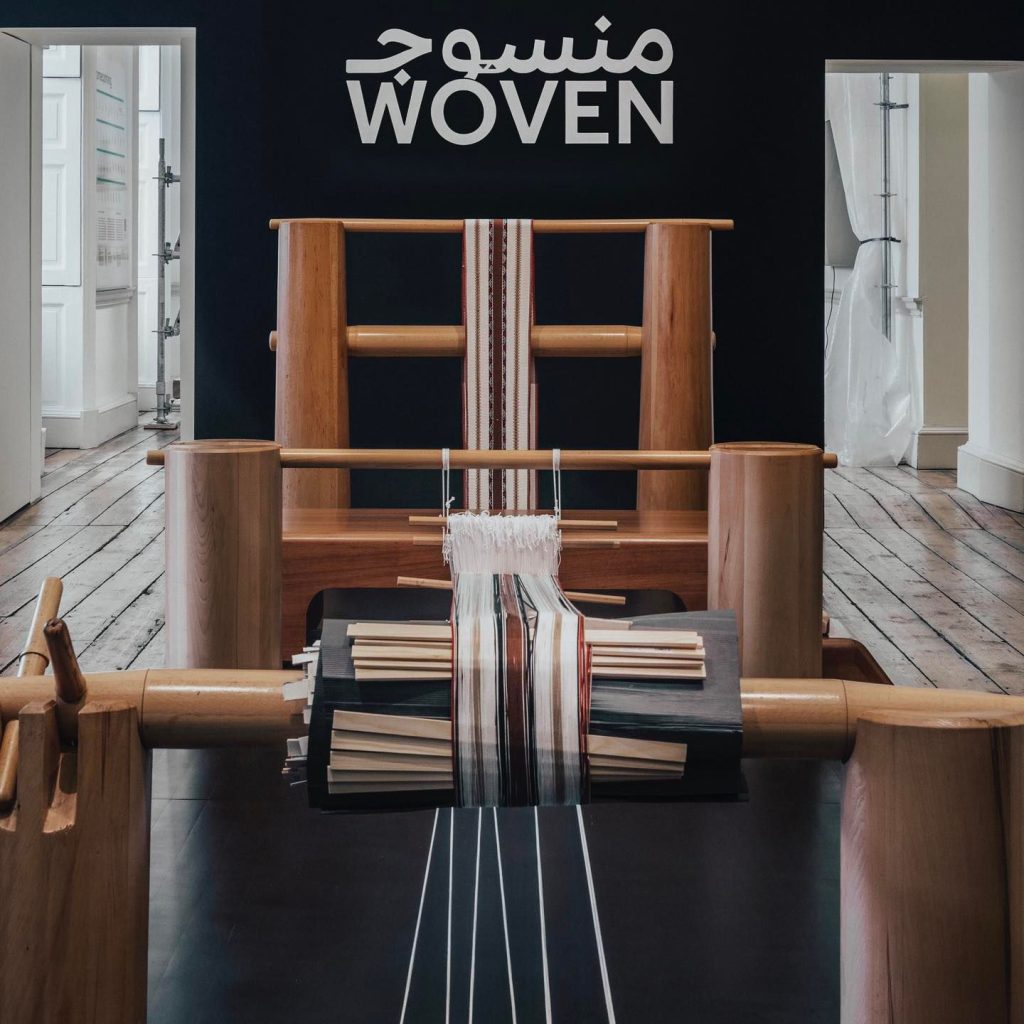
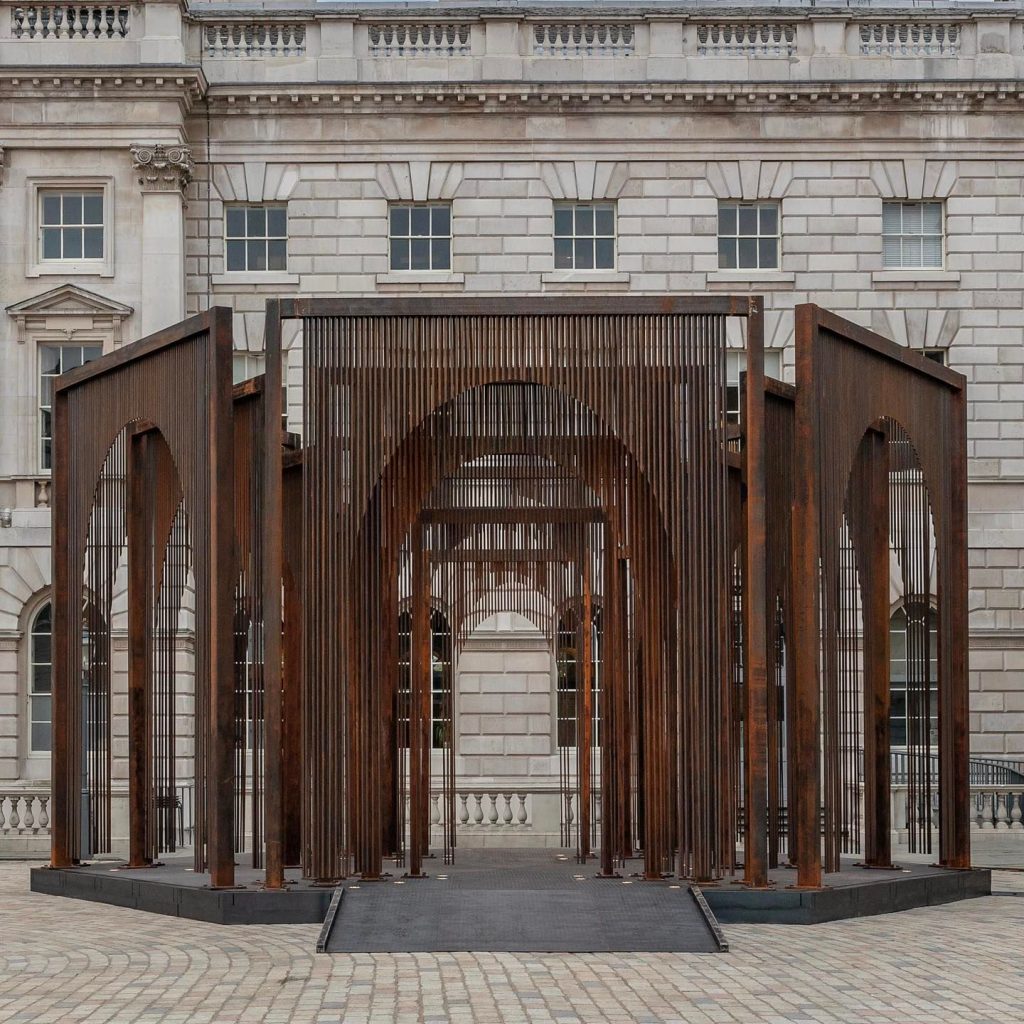













Leave a comment